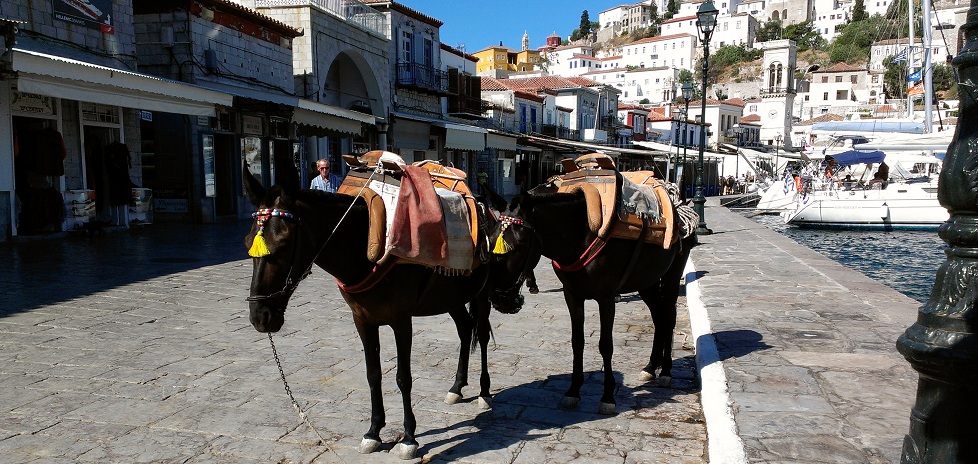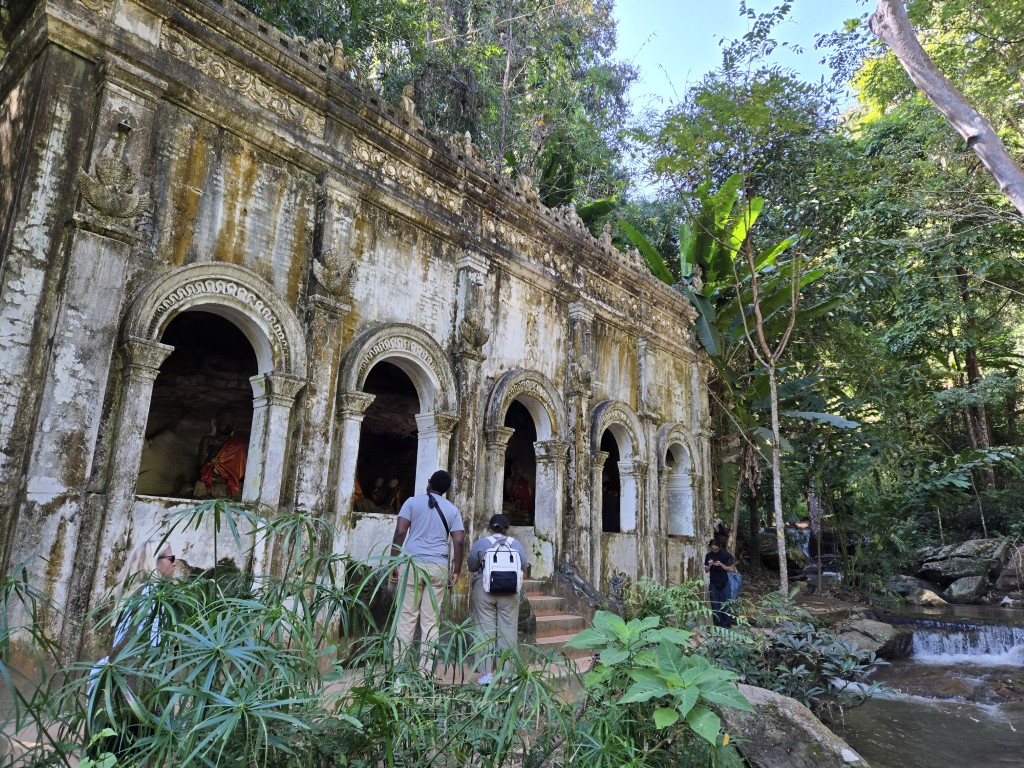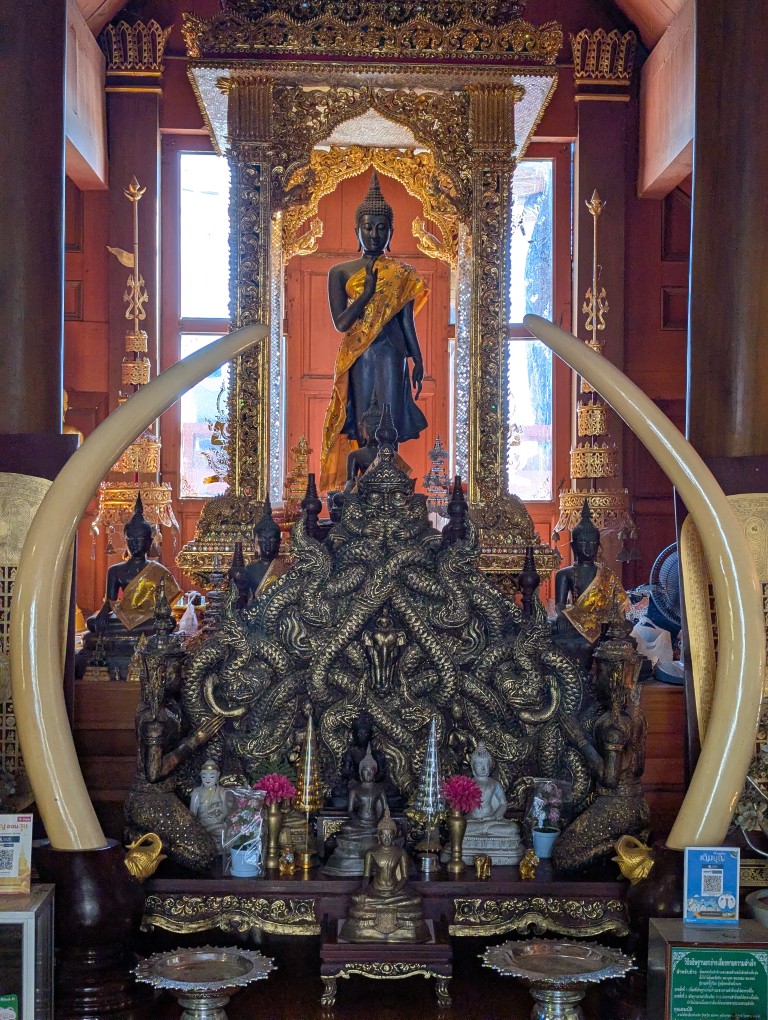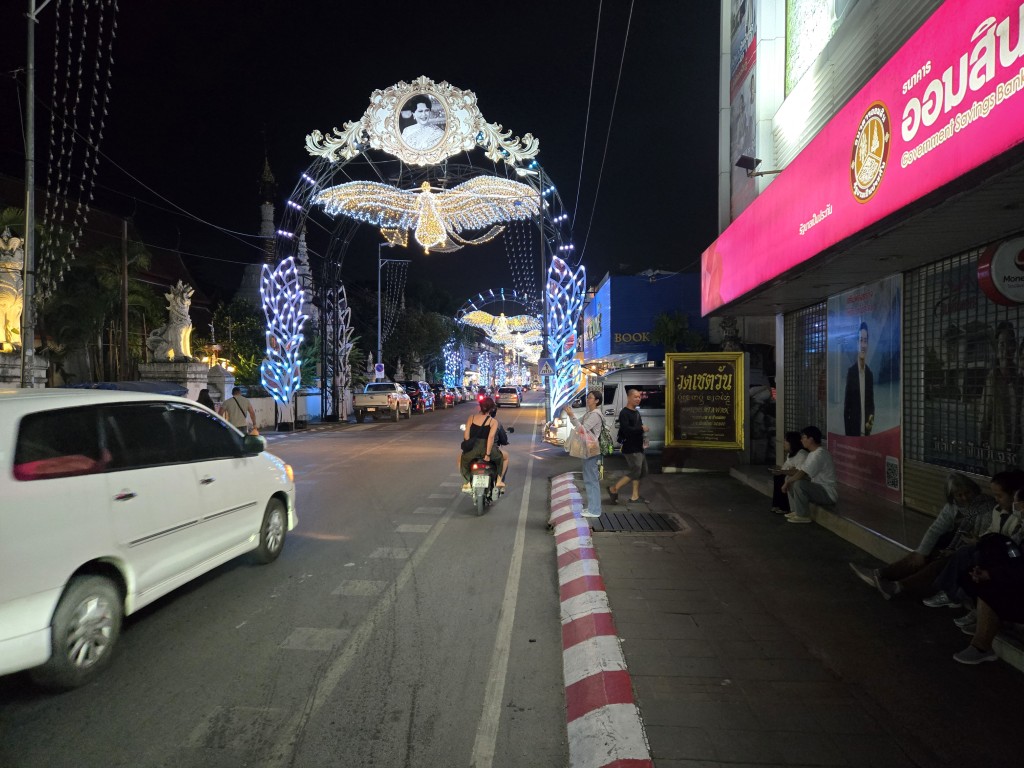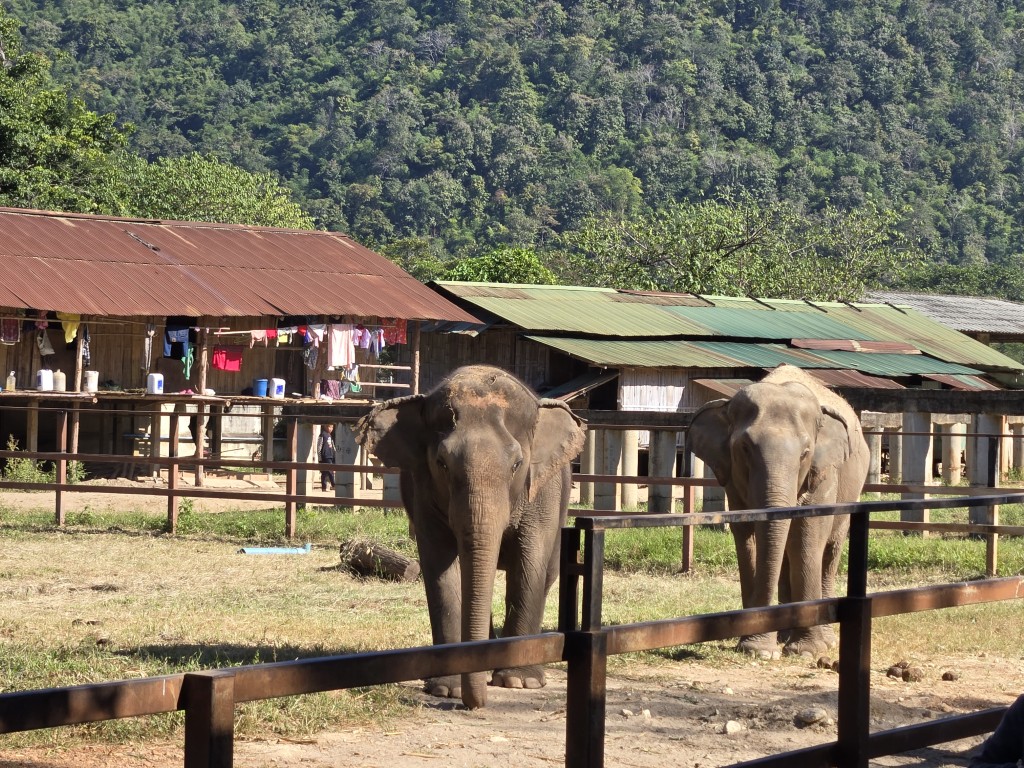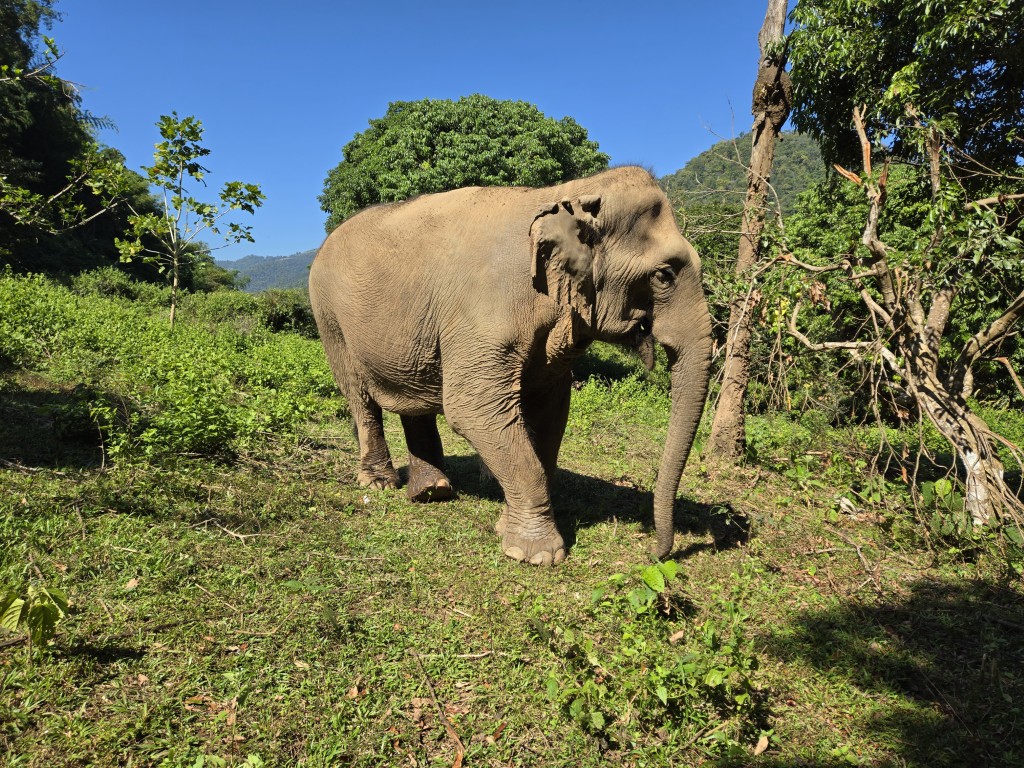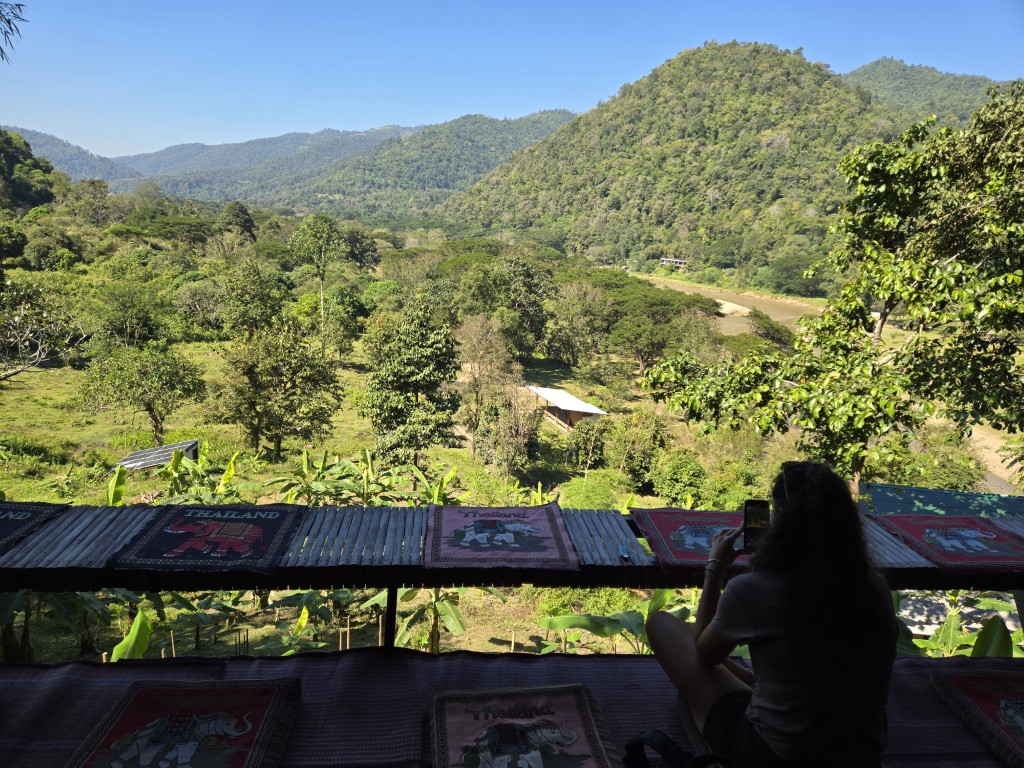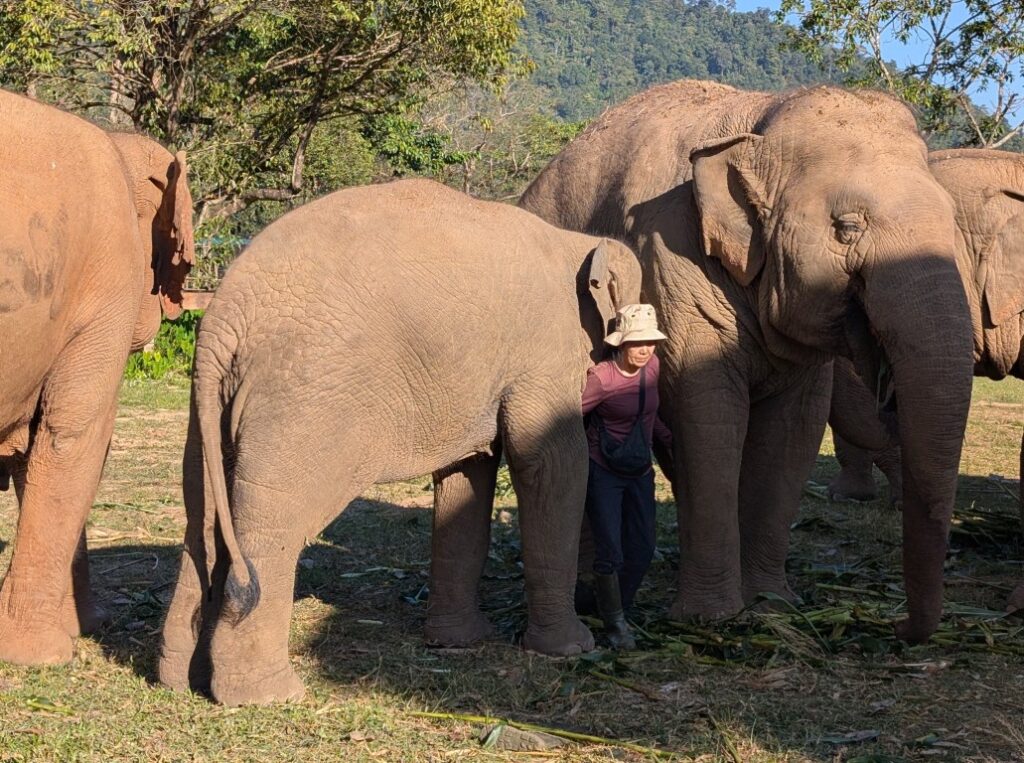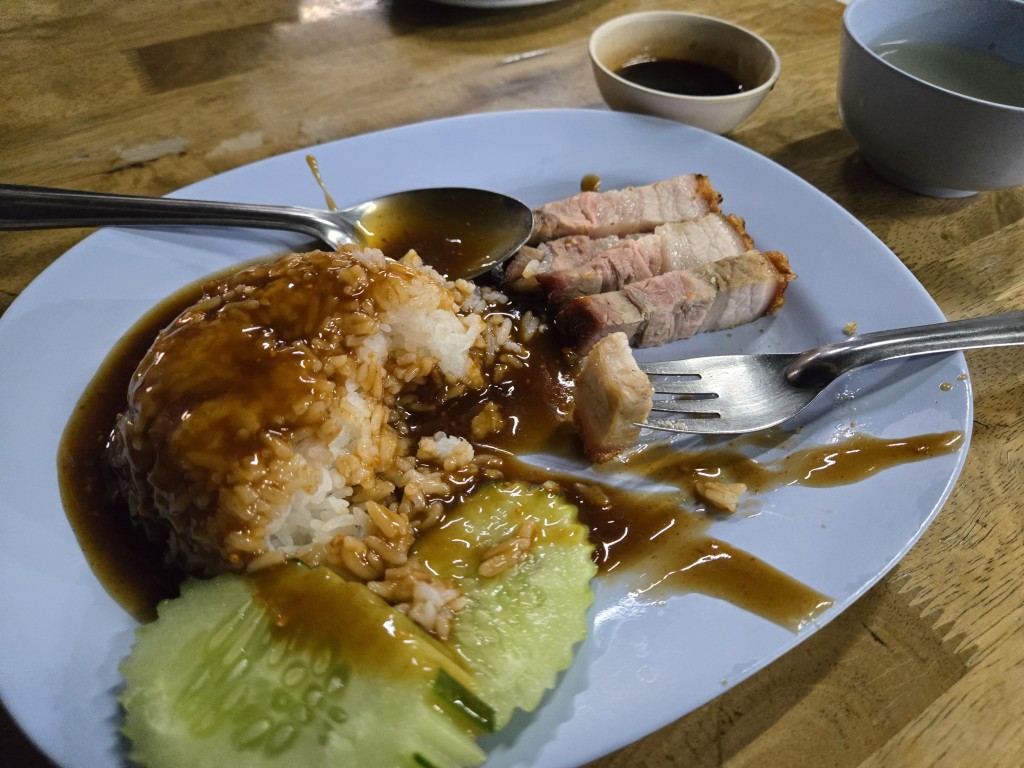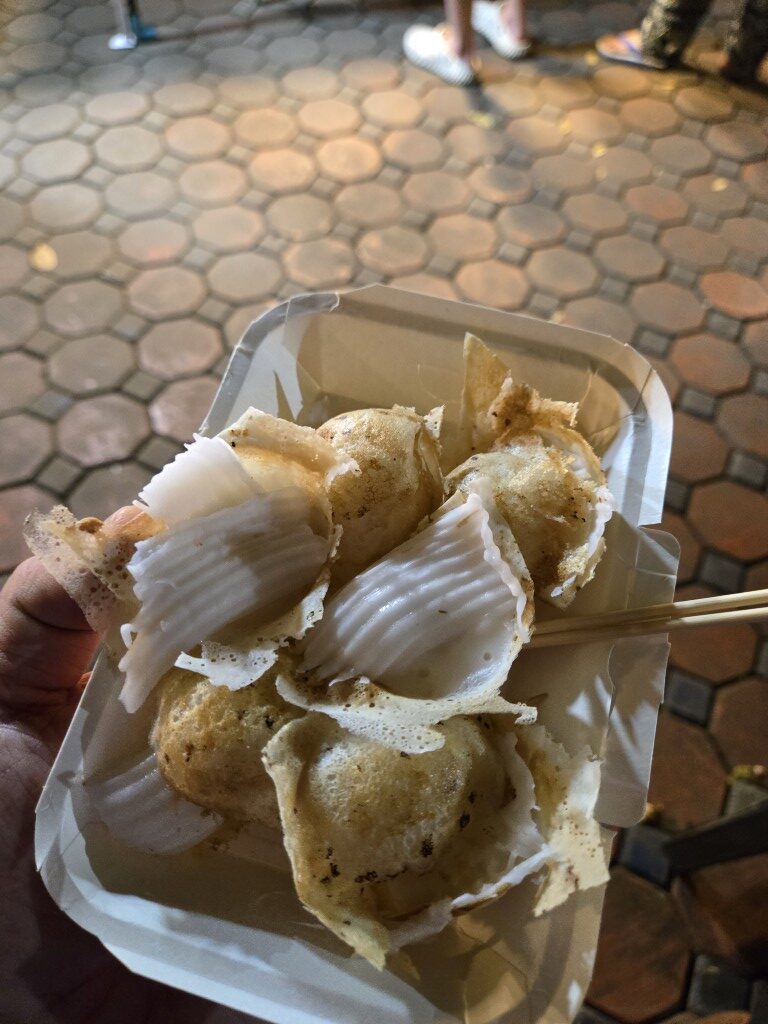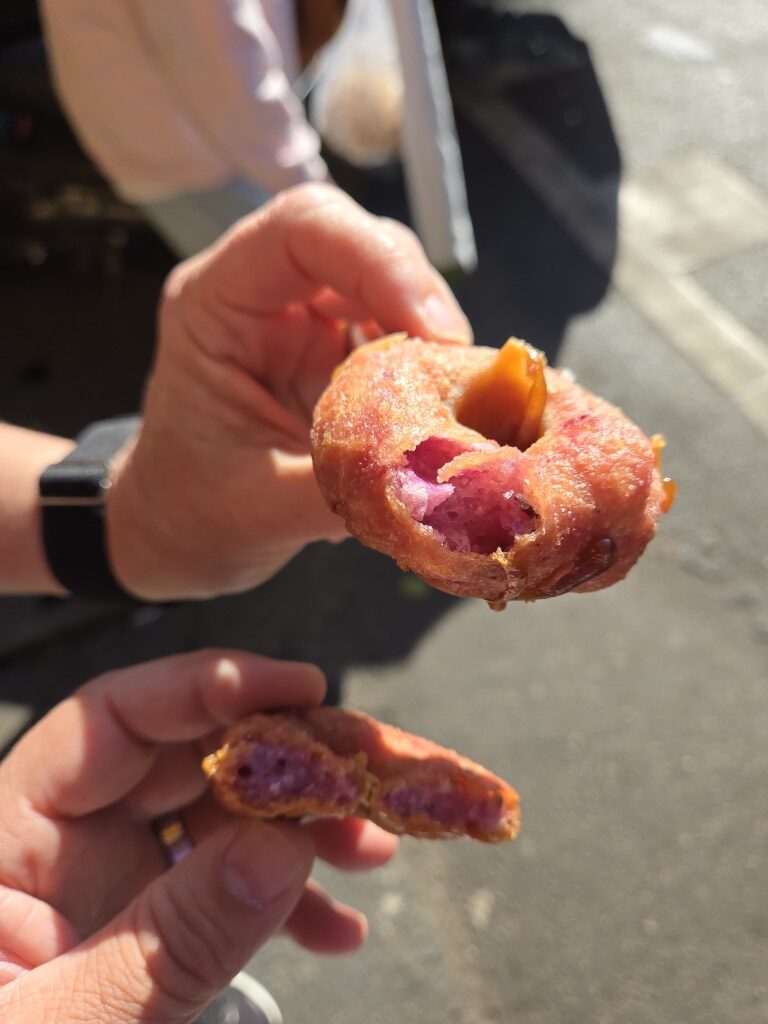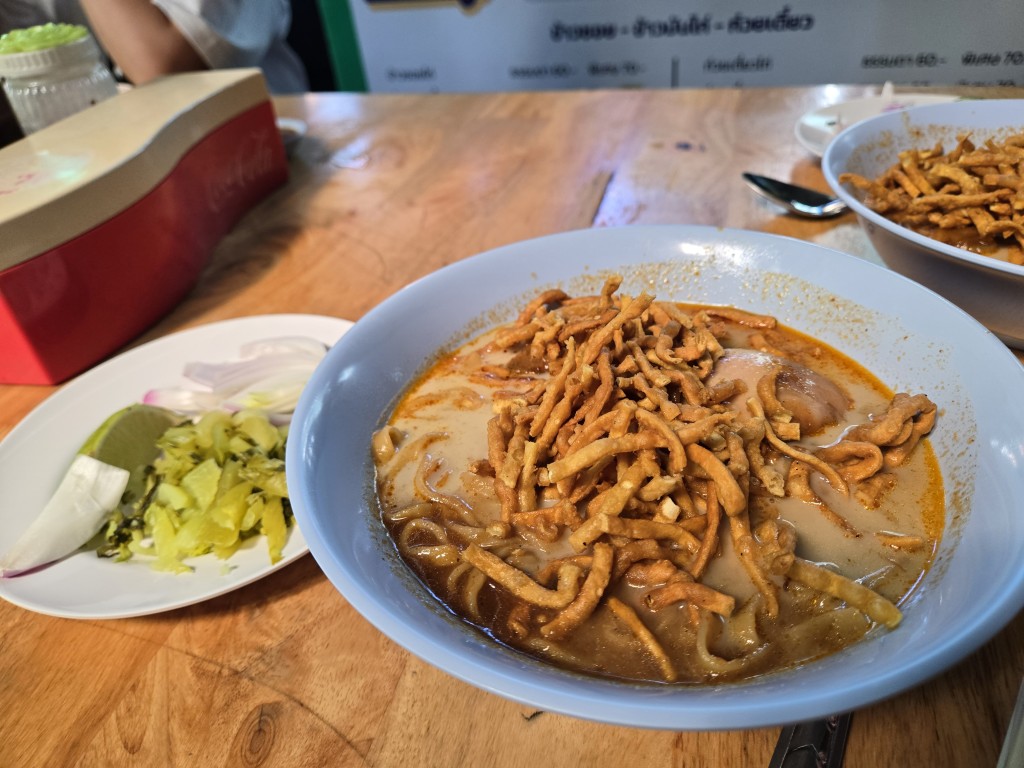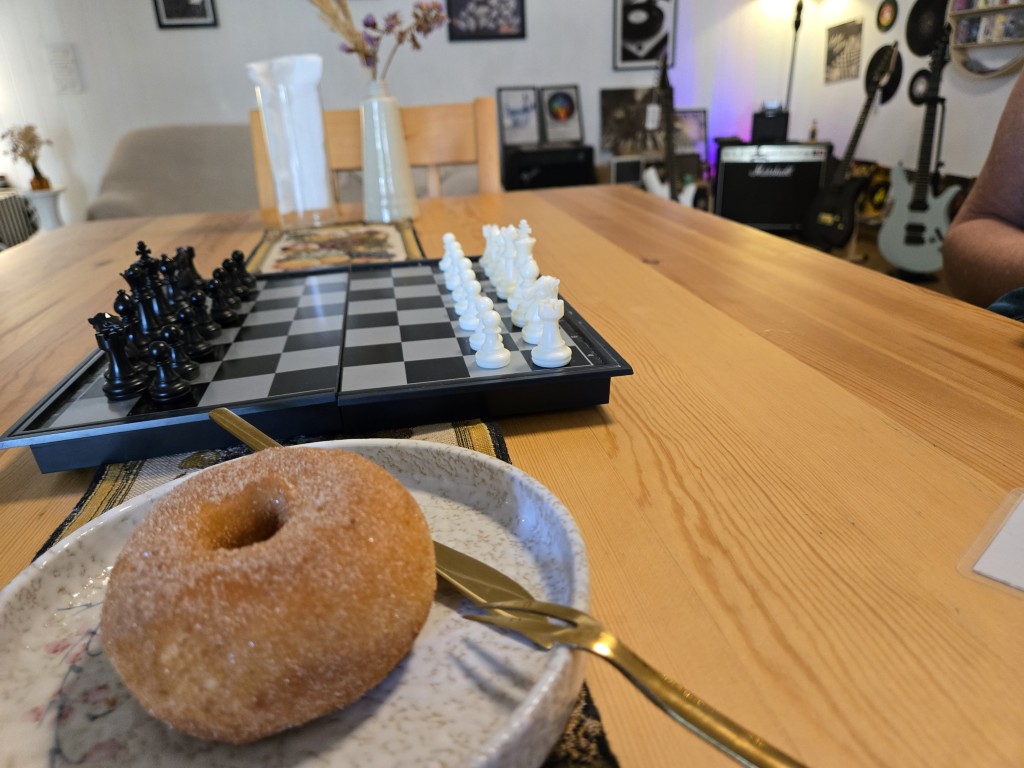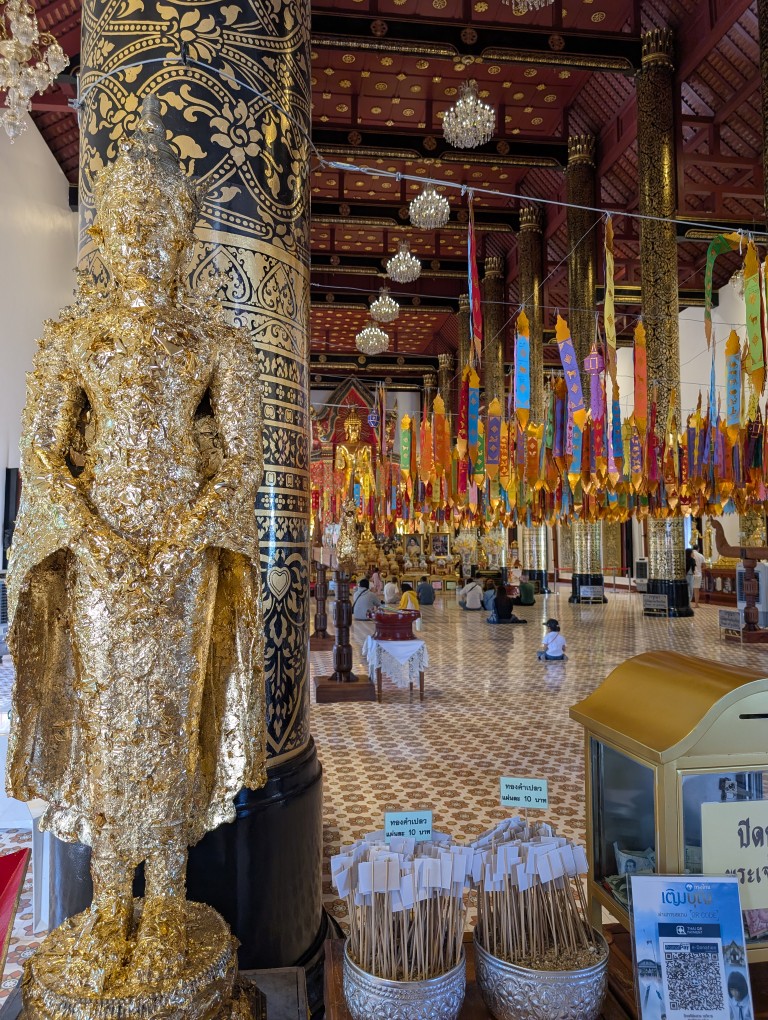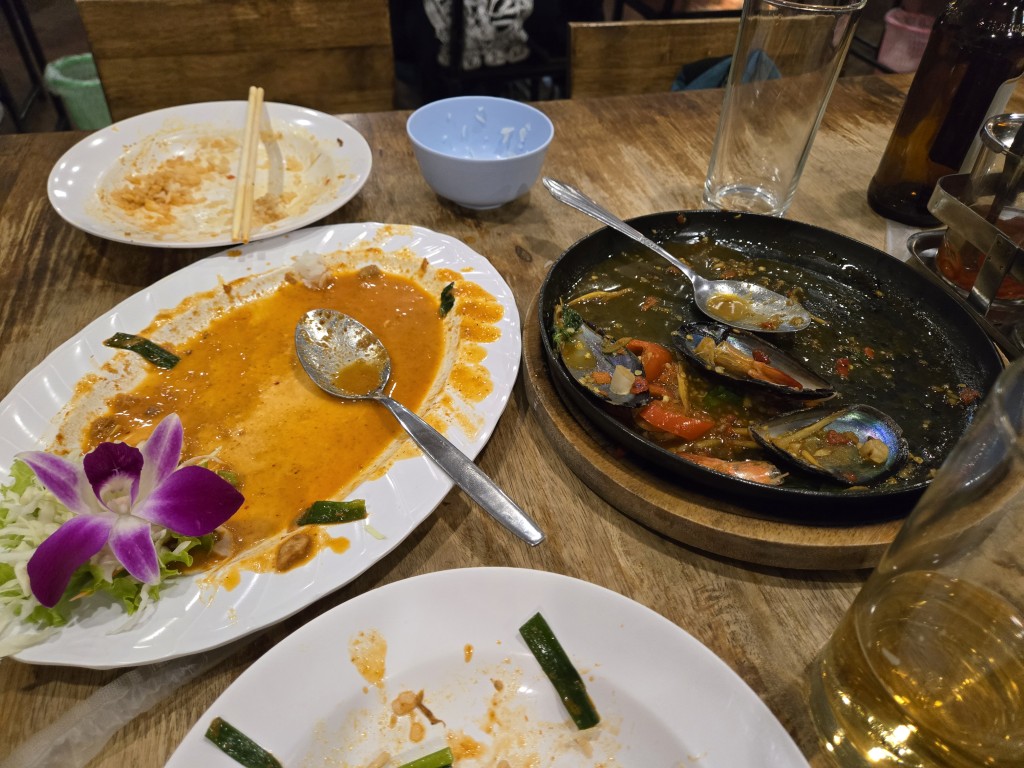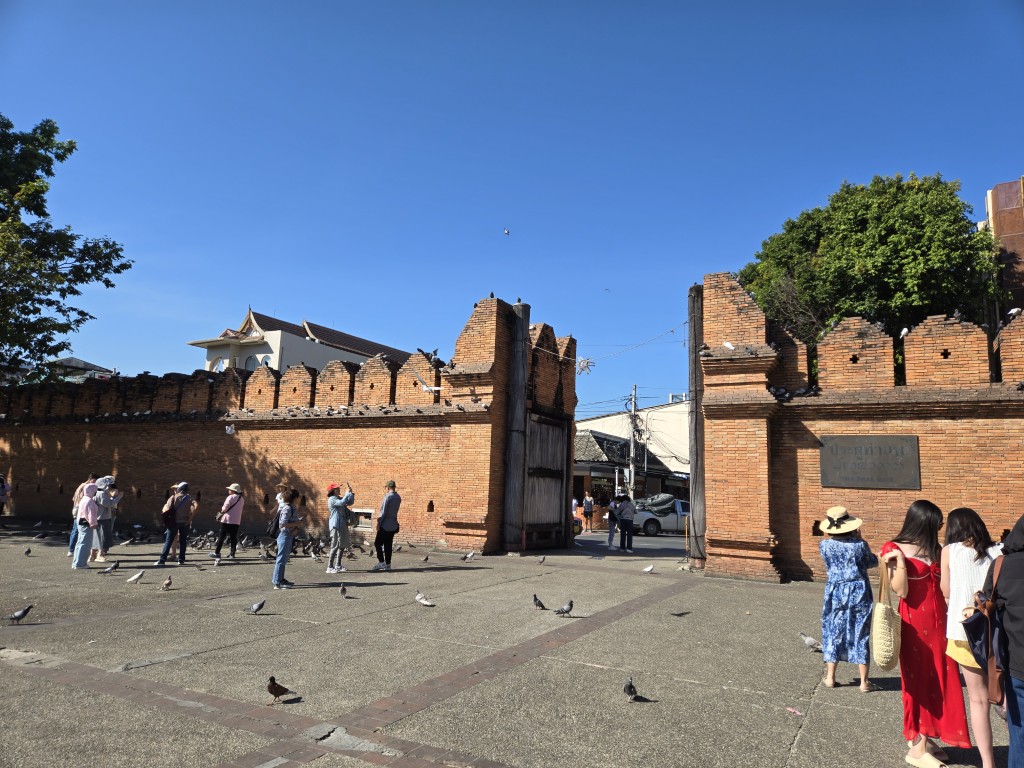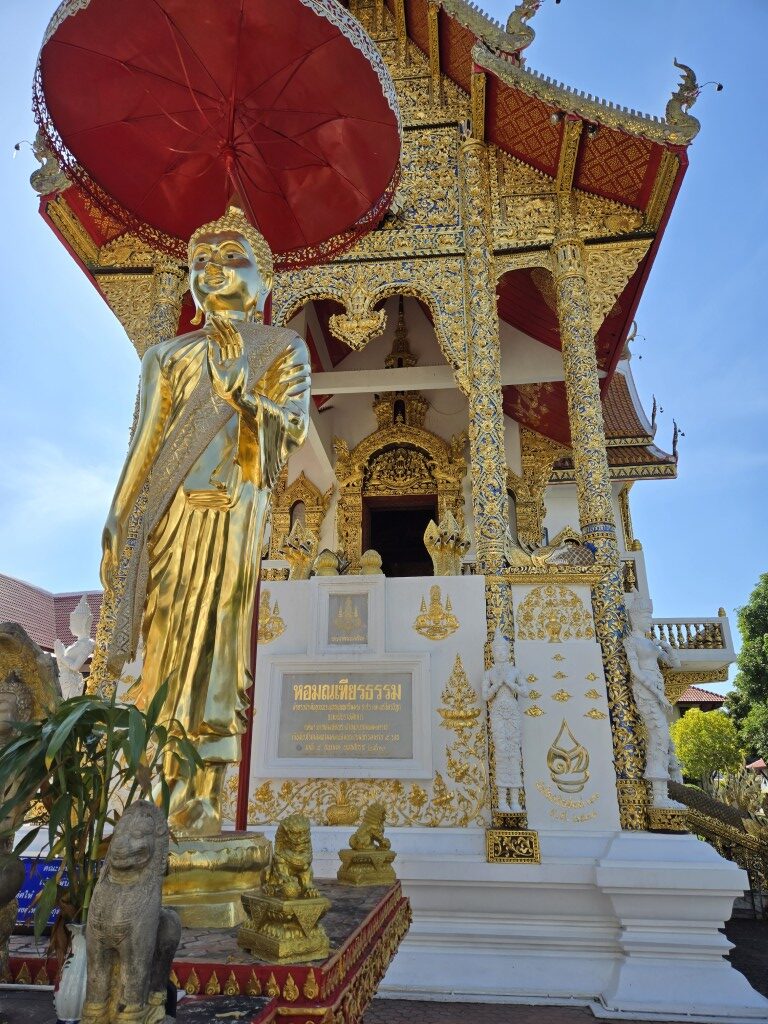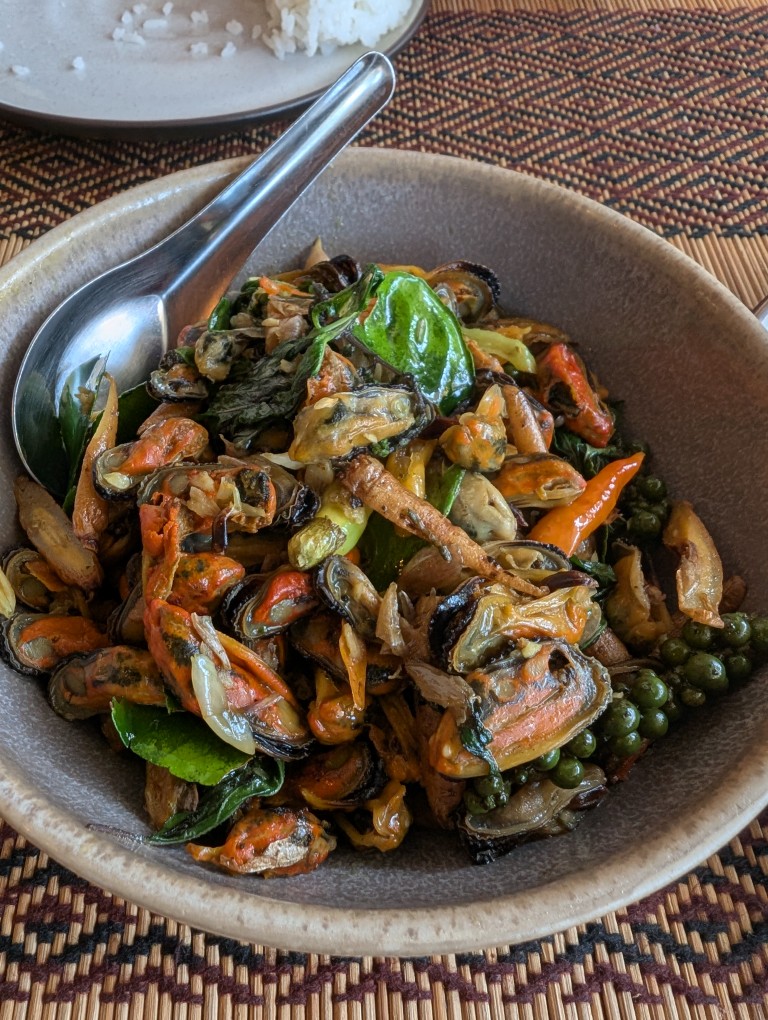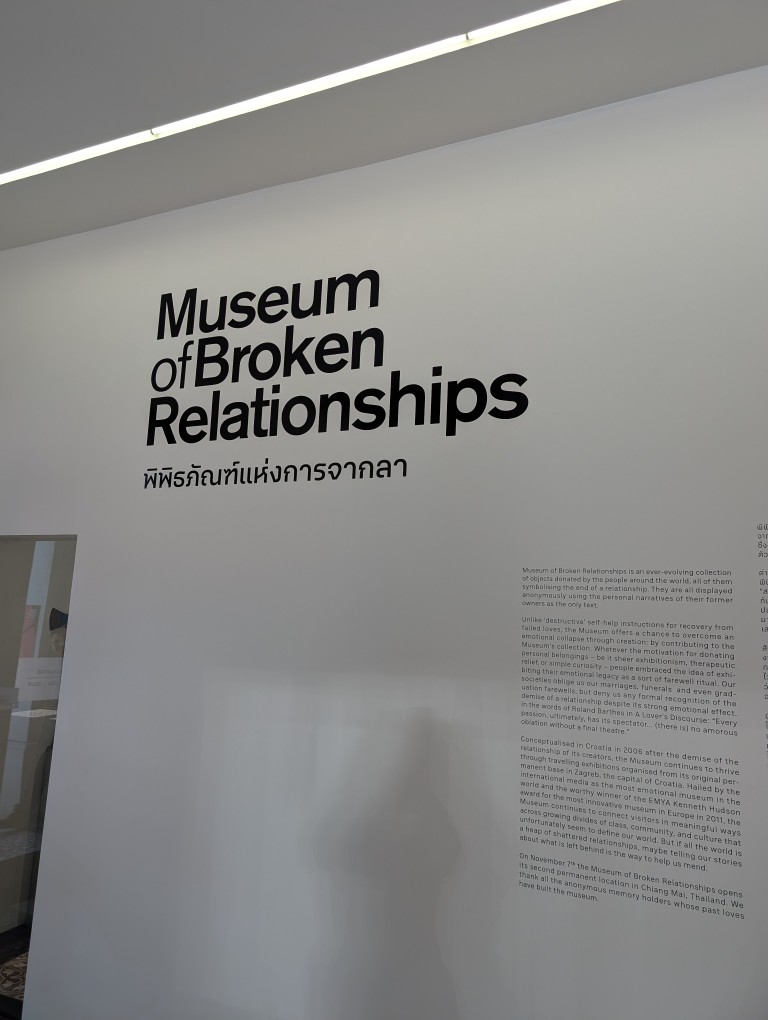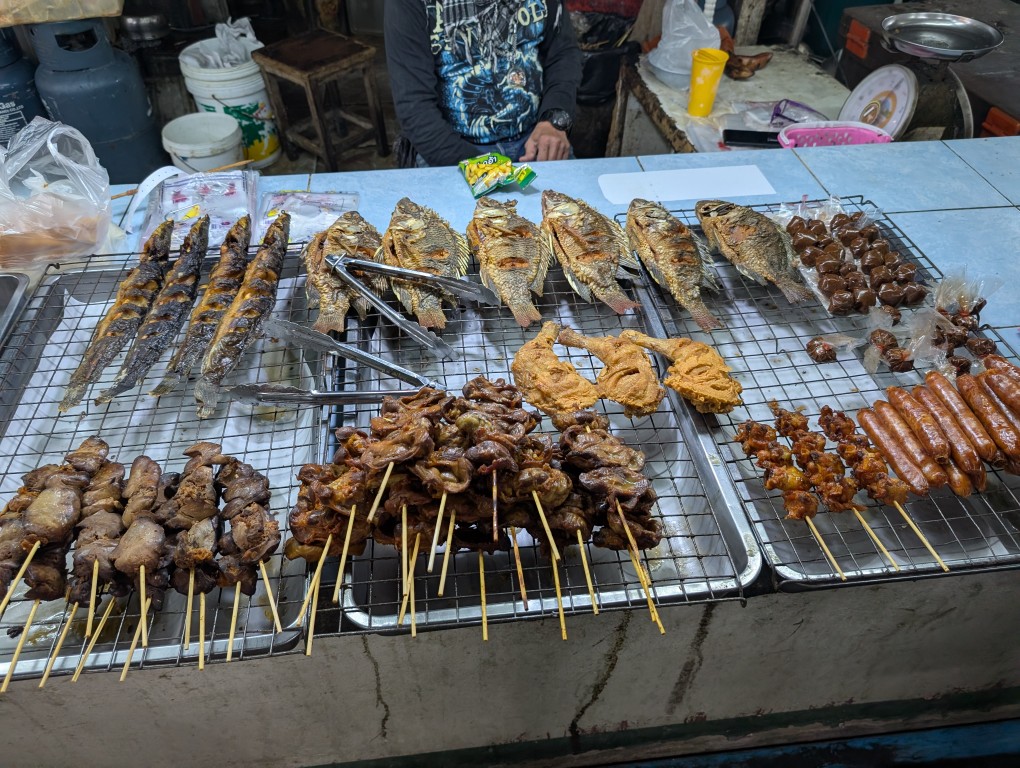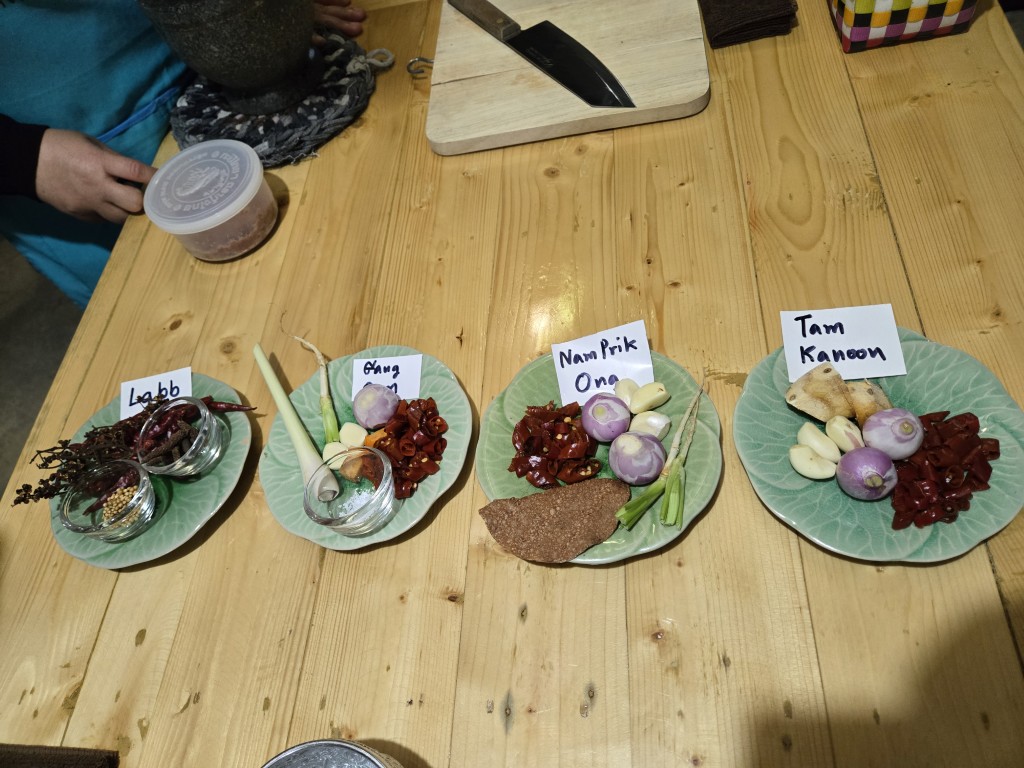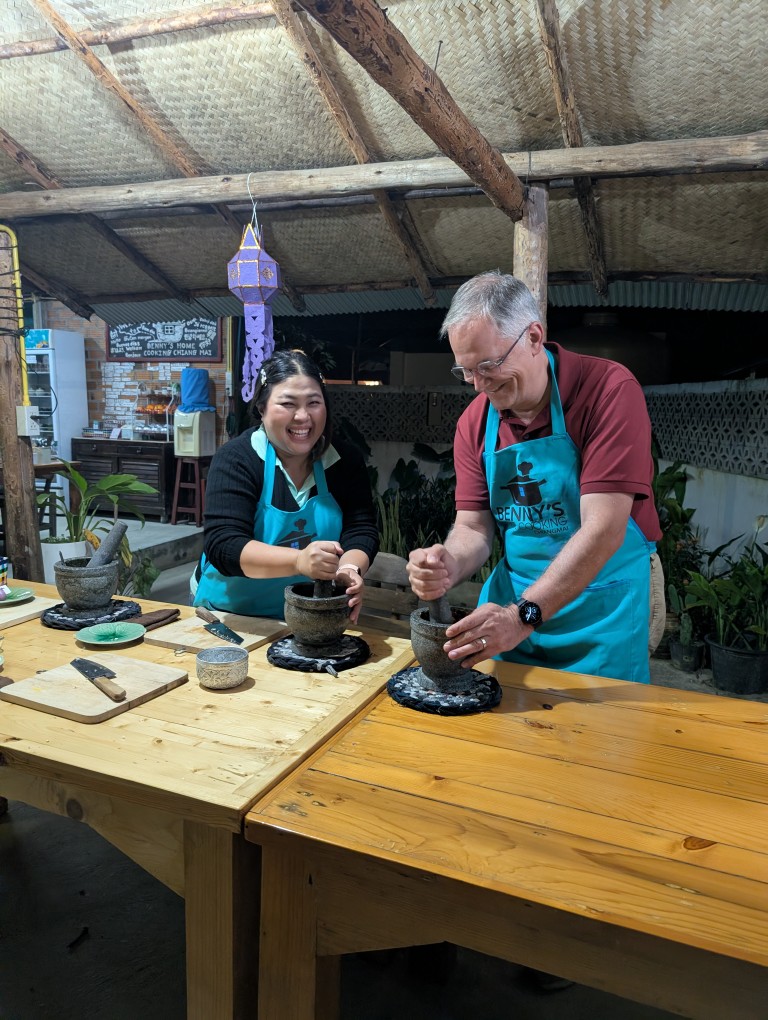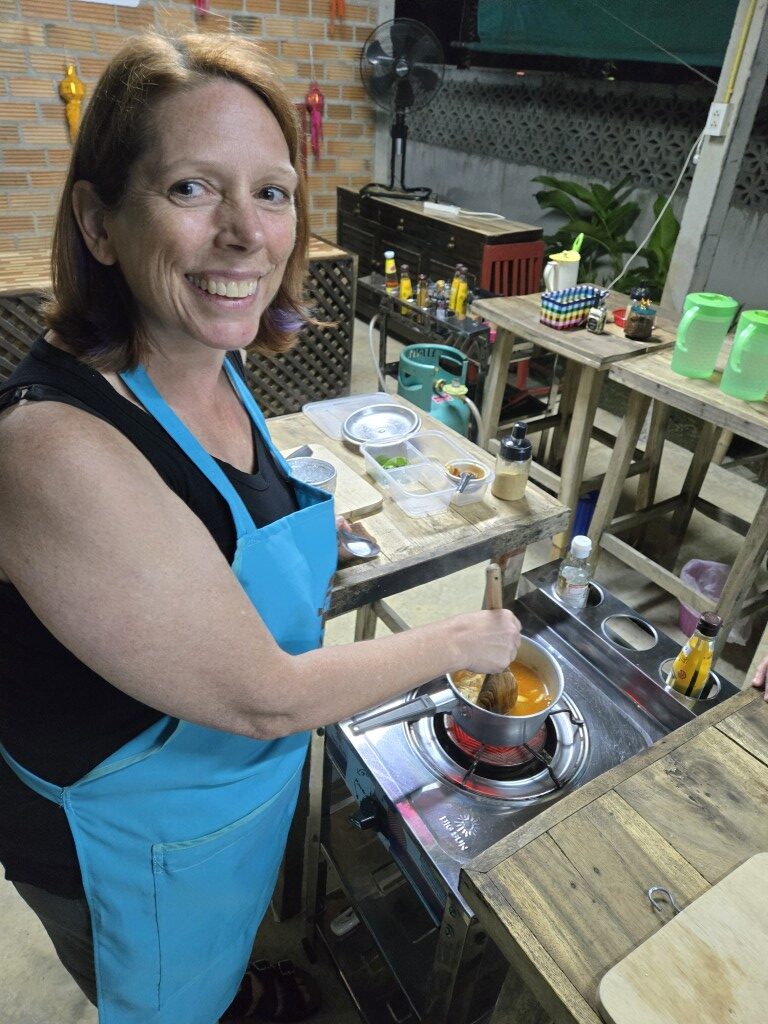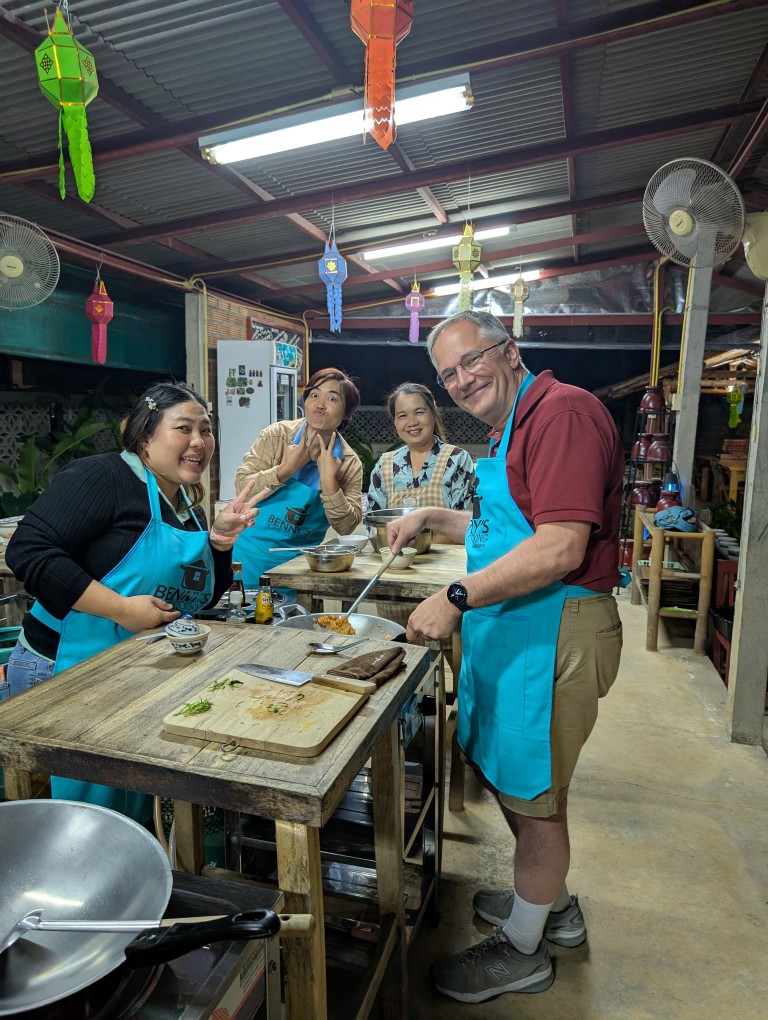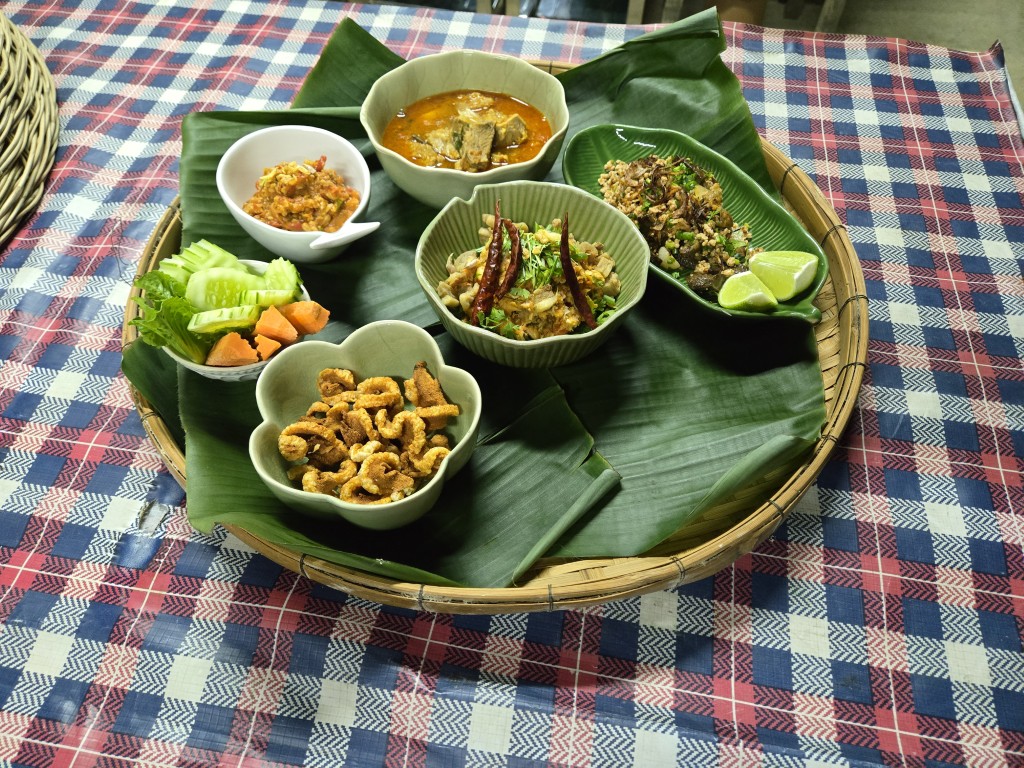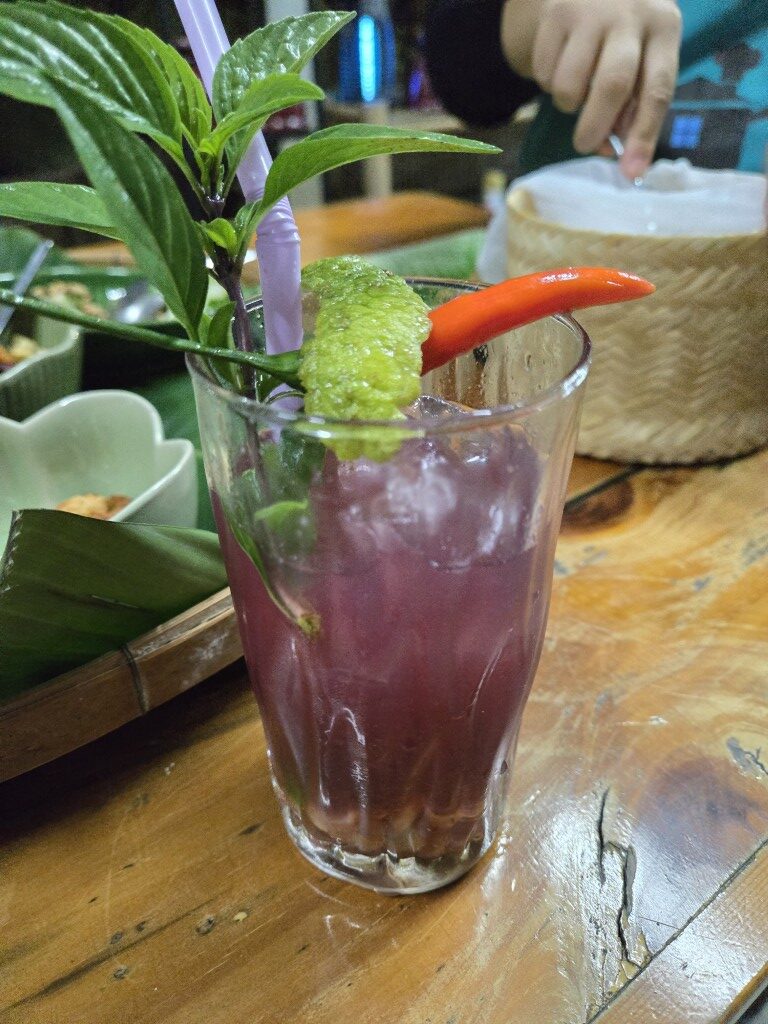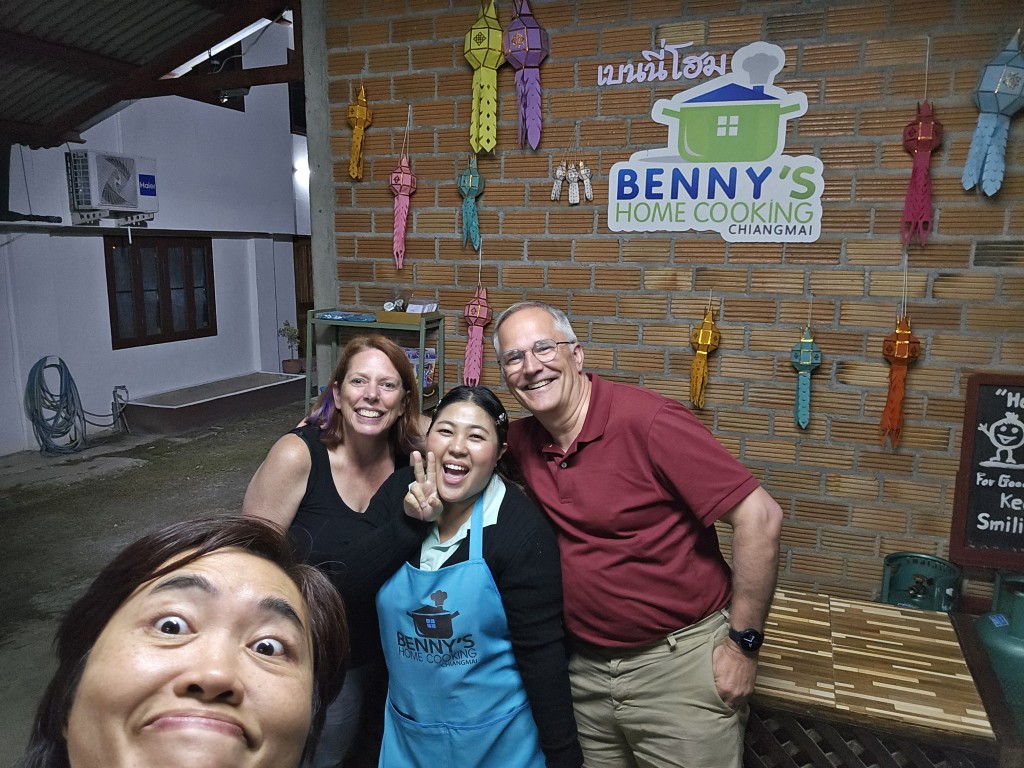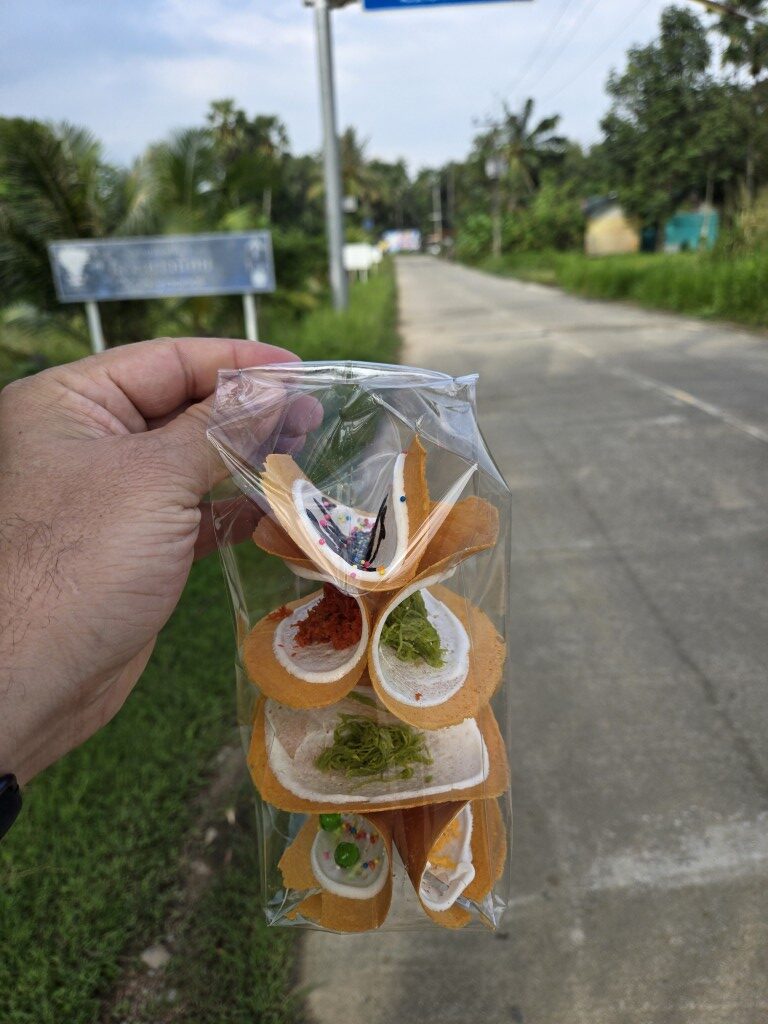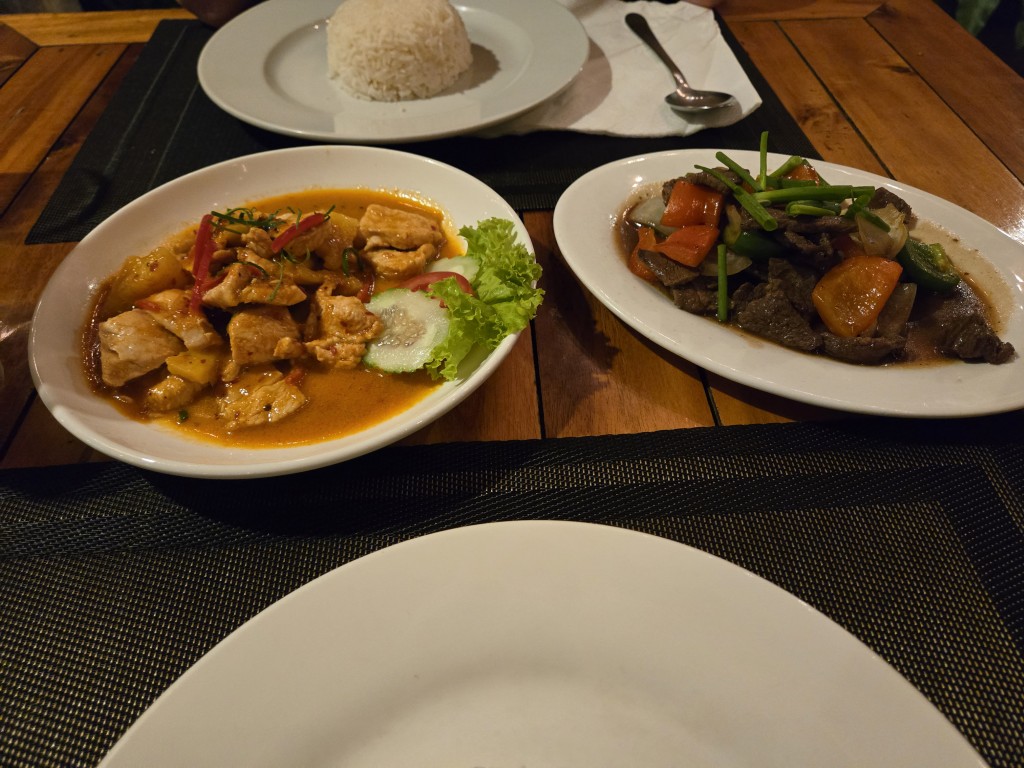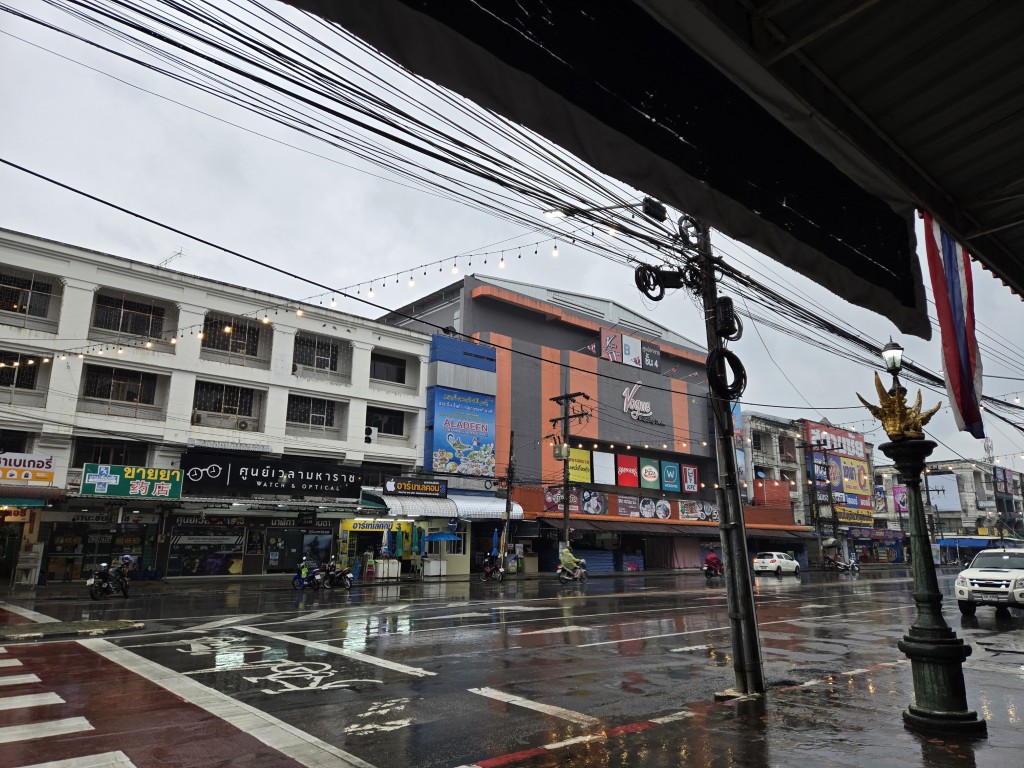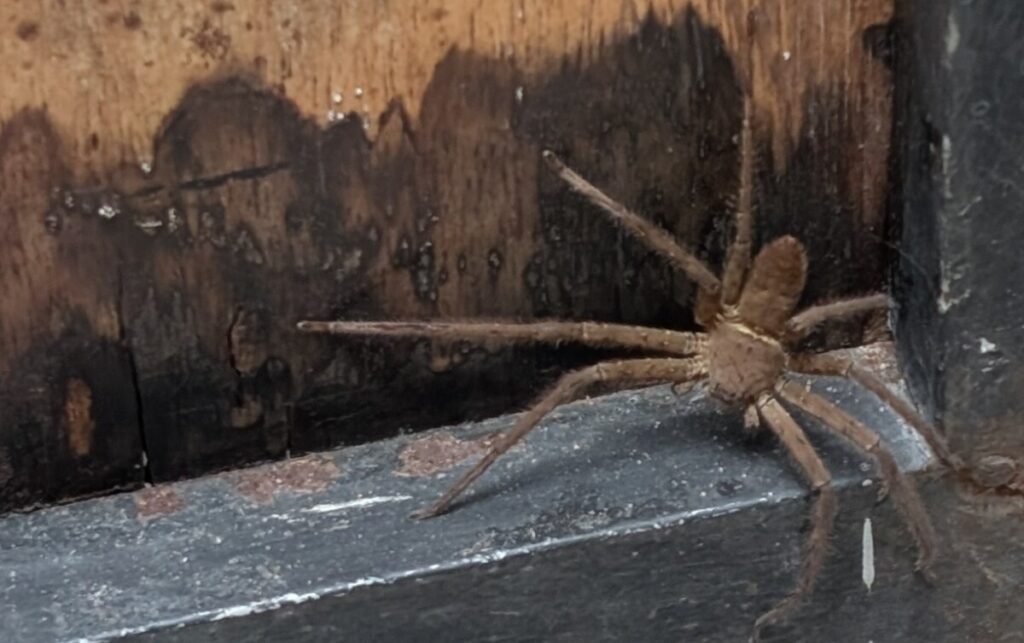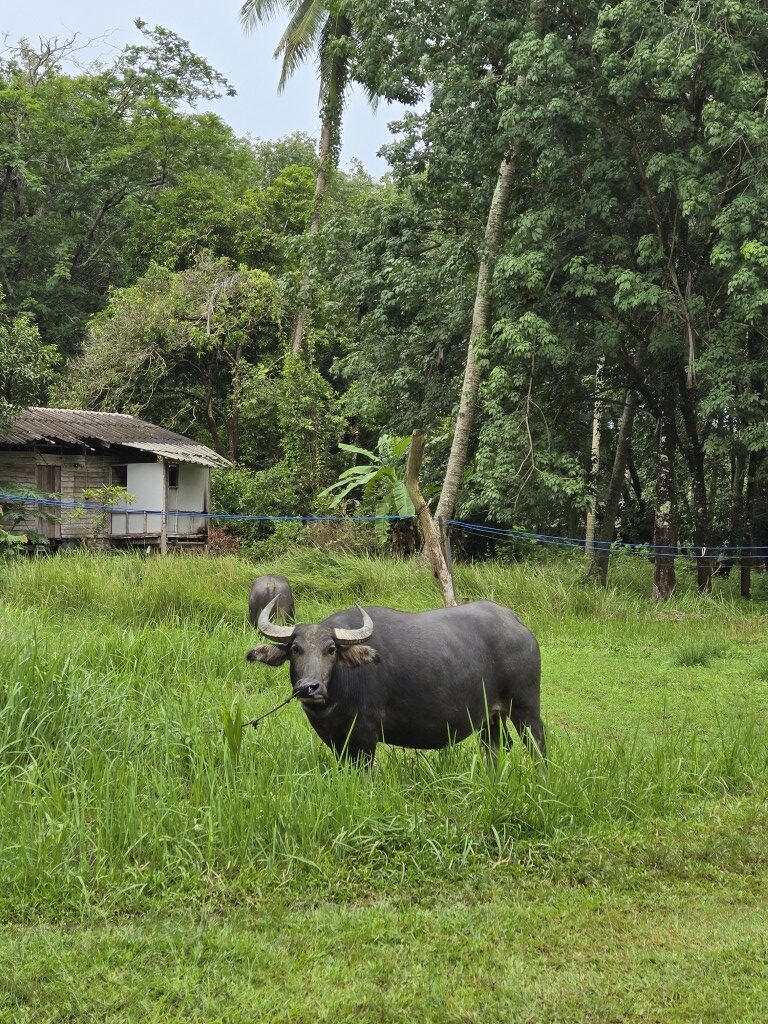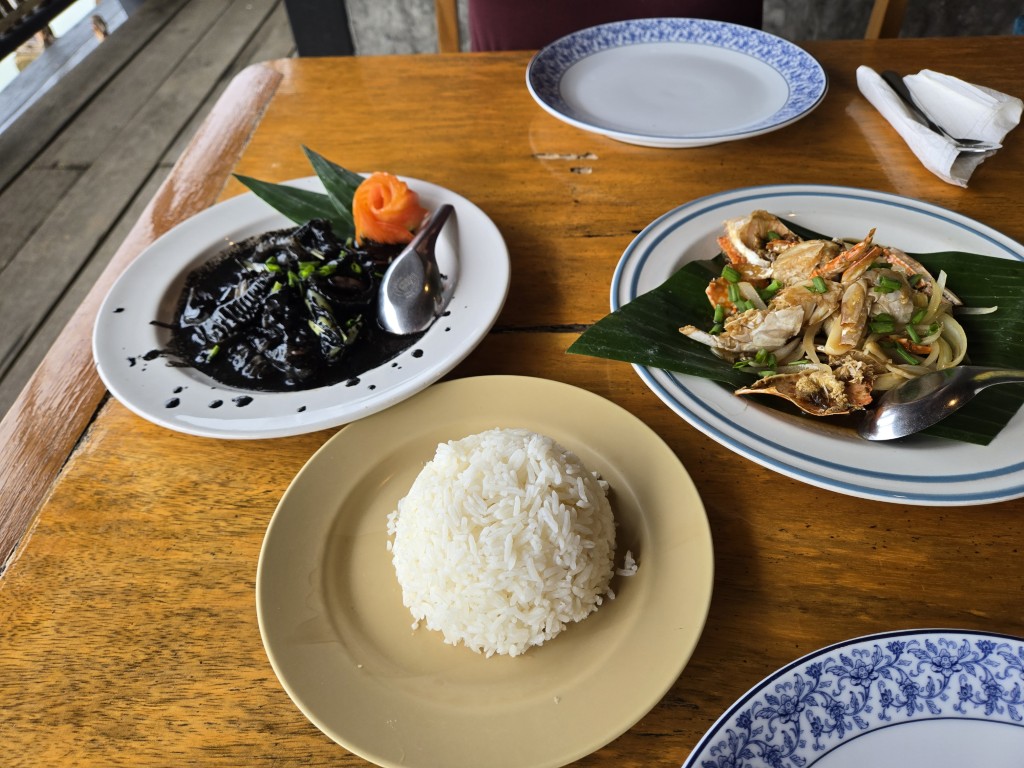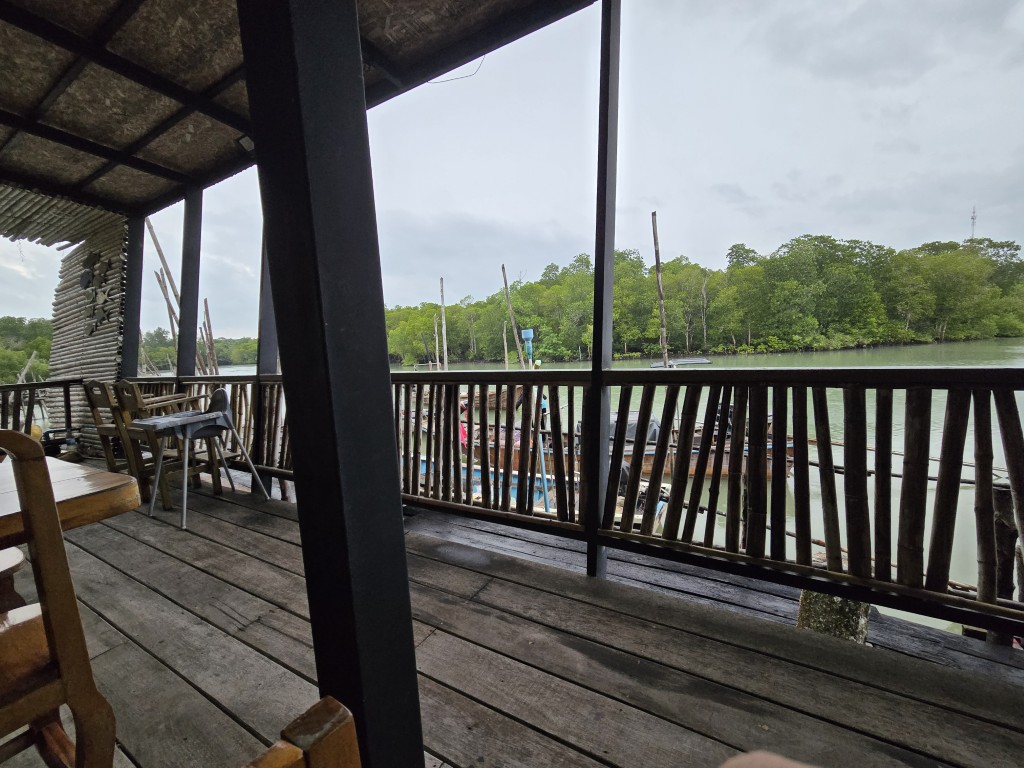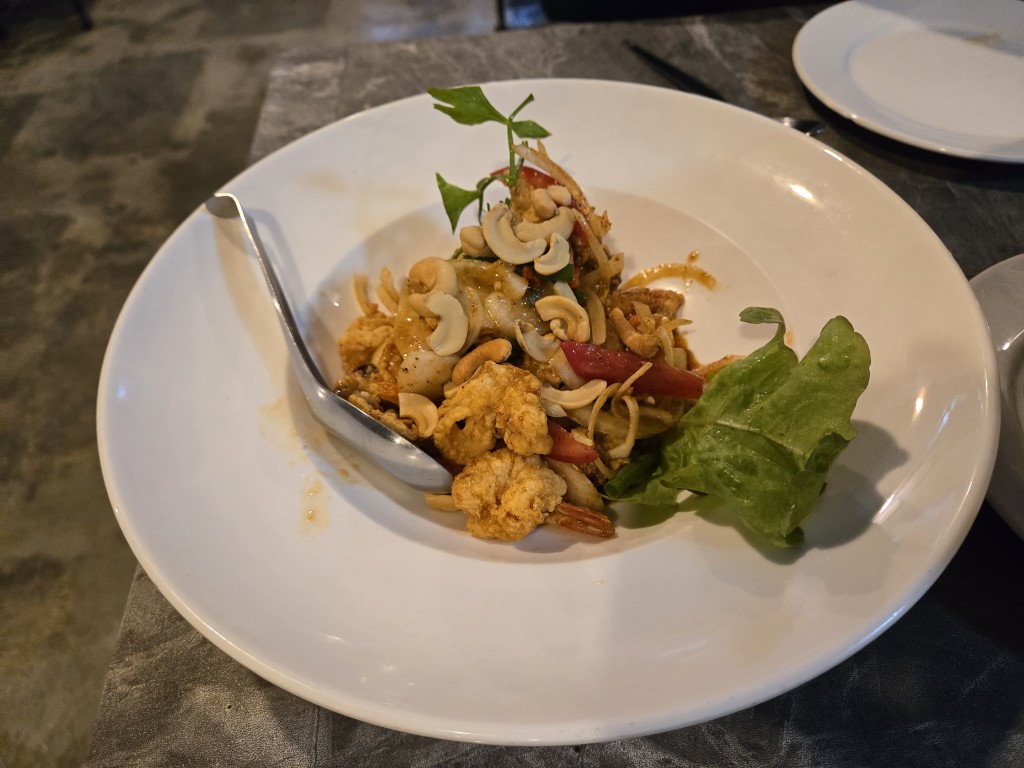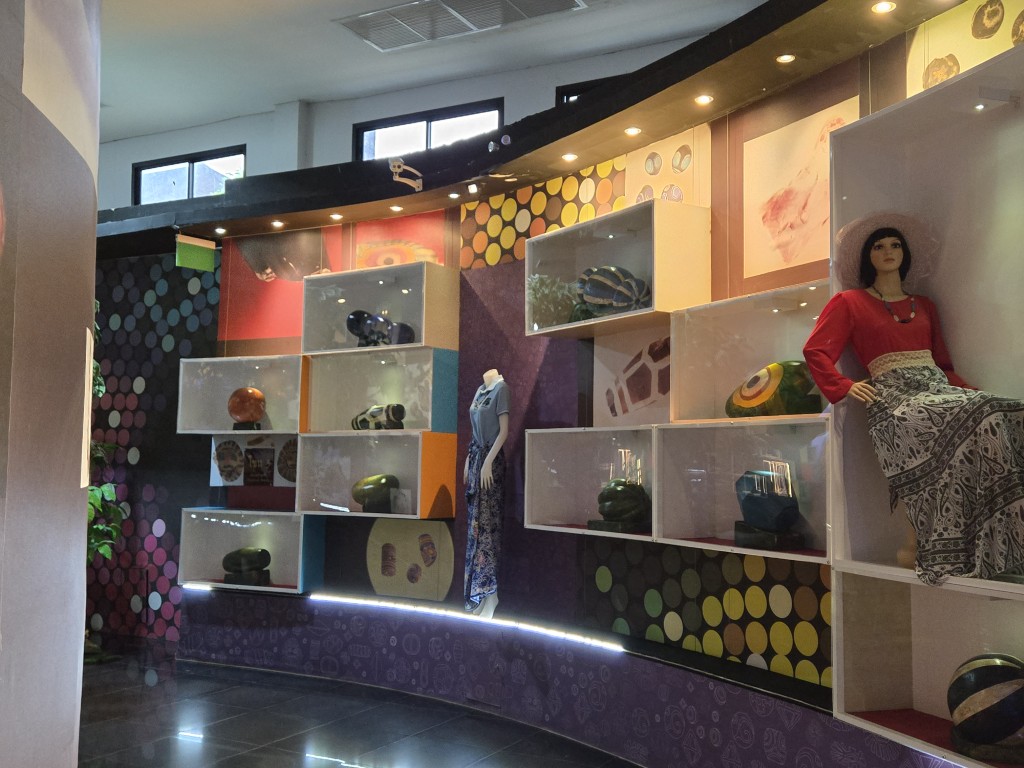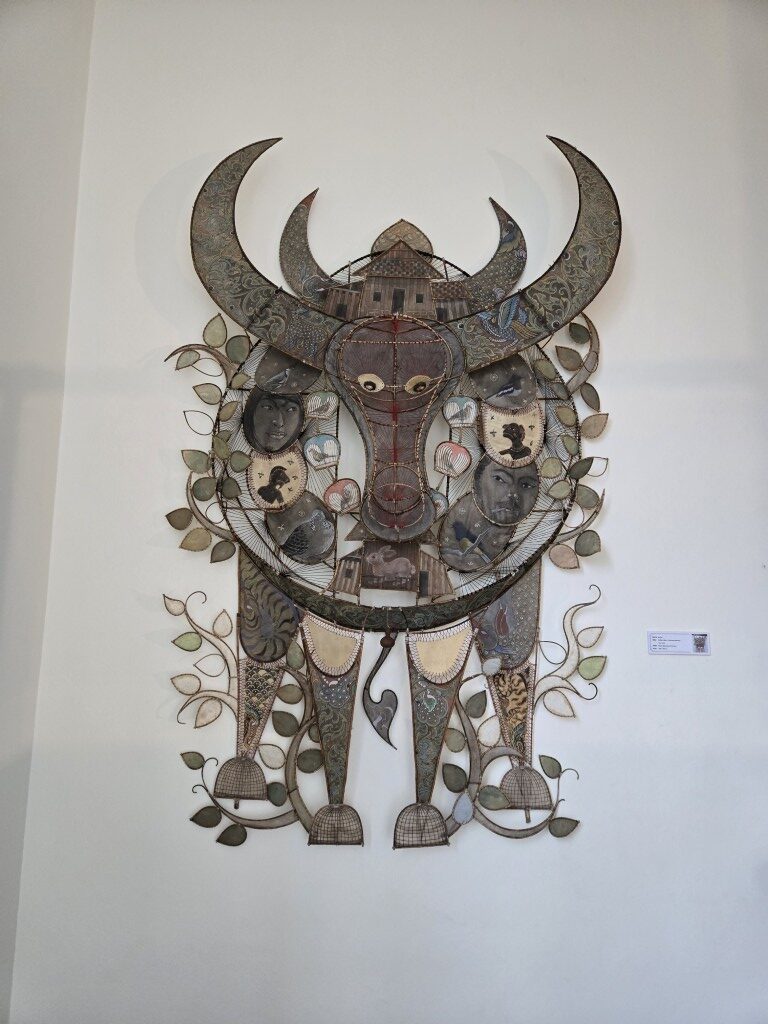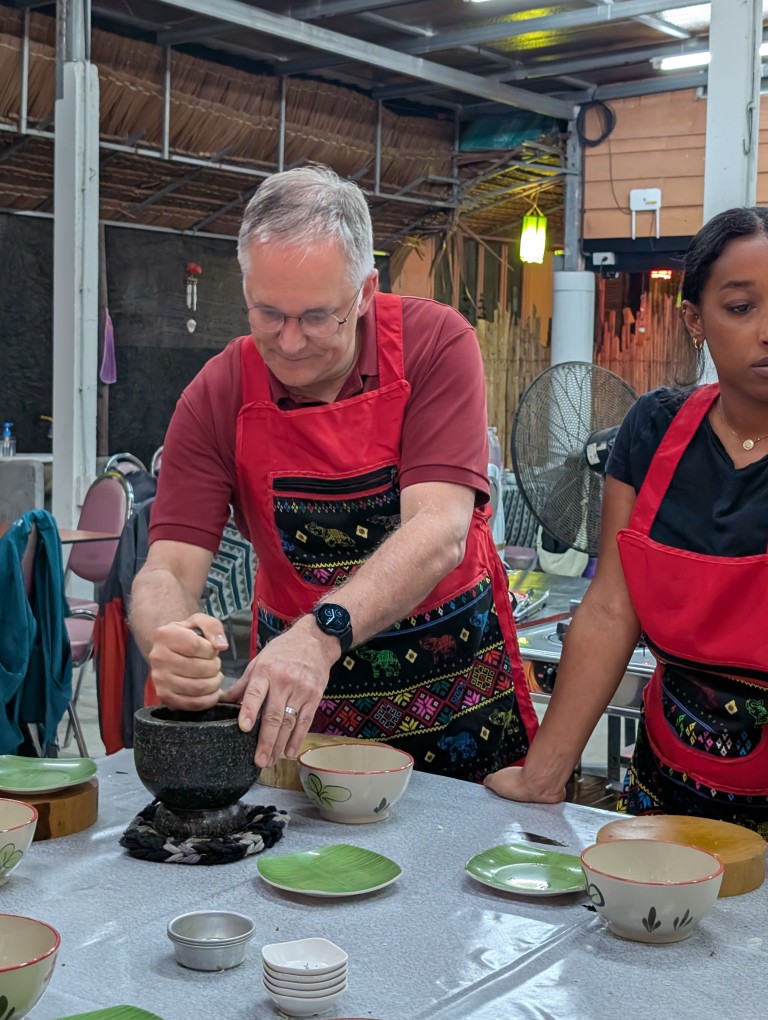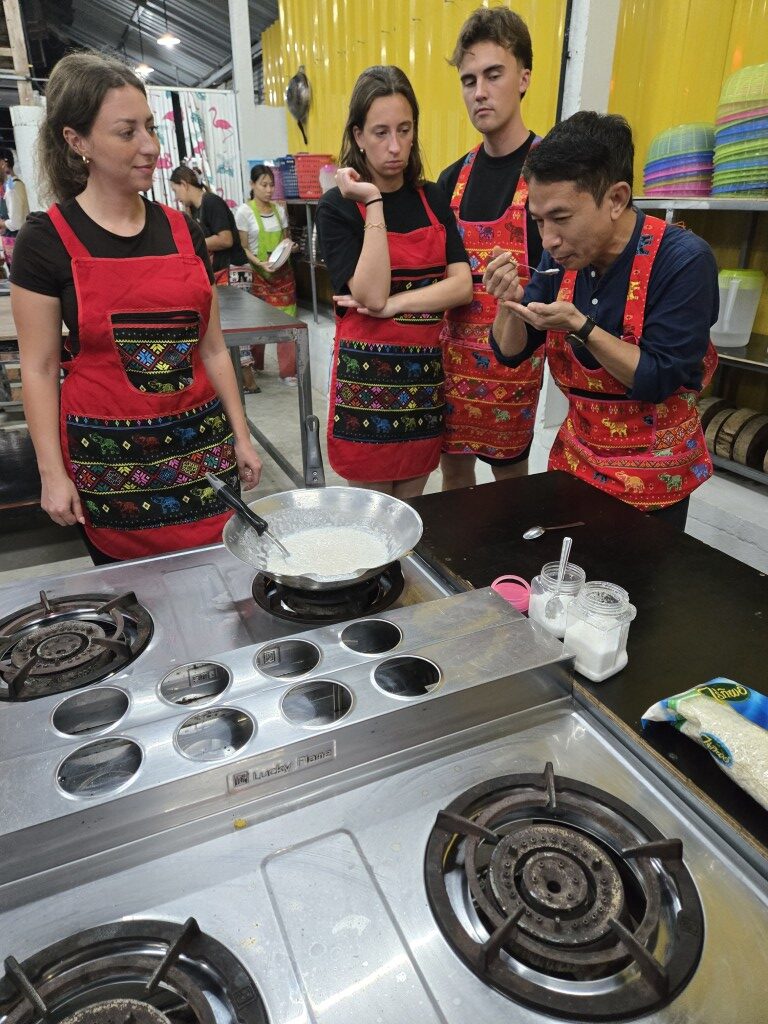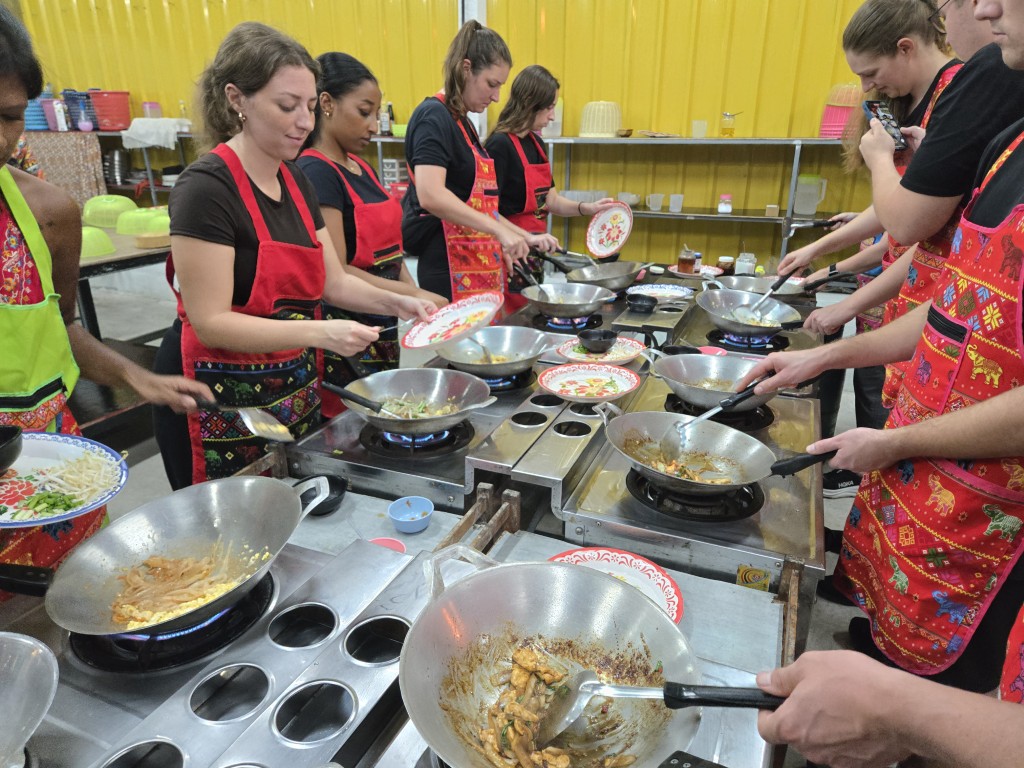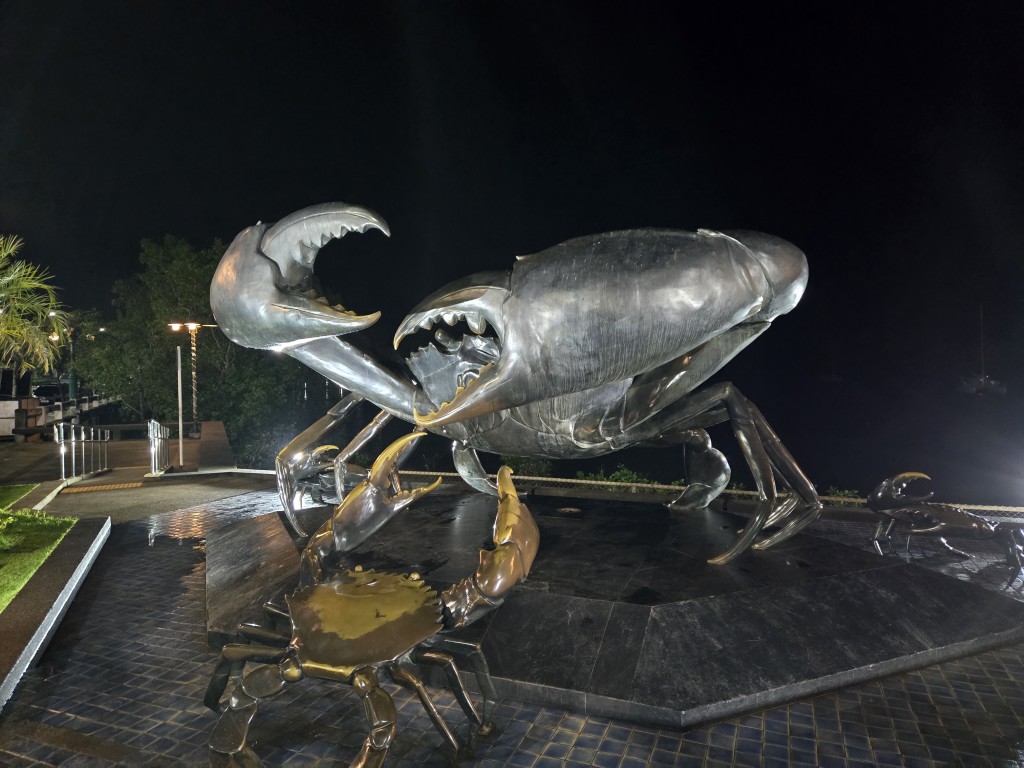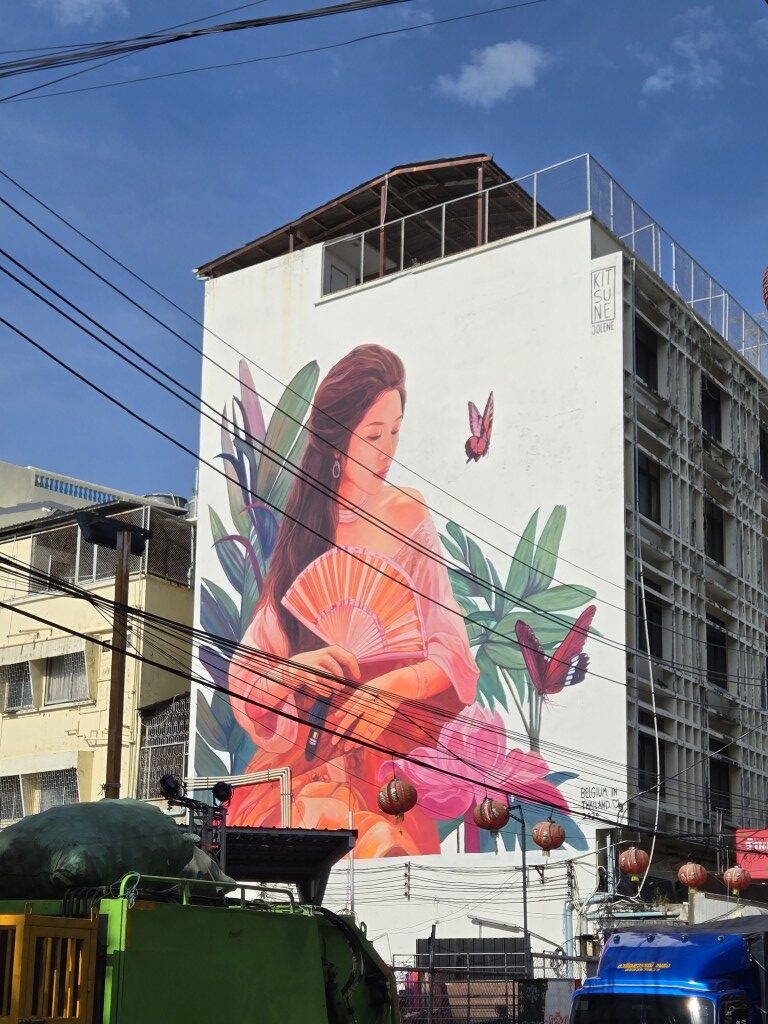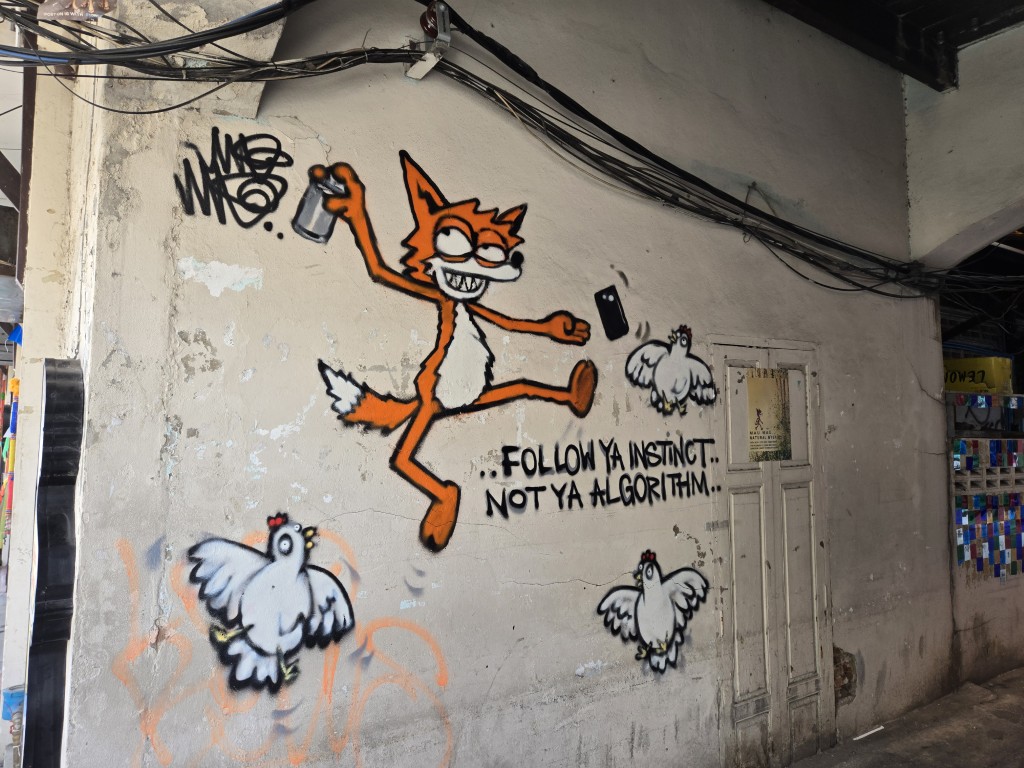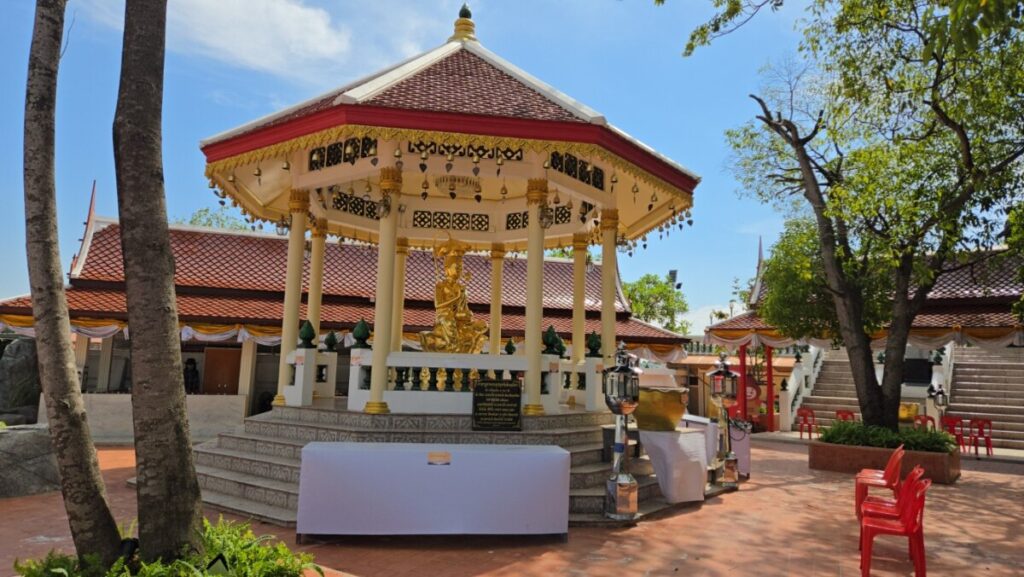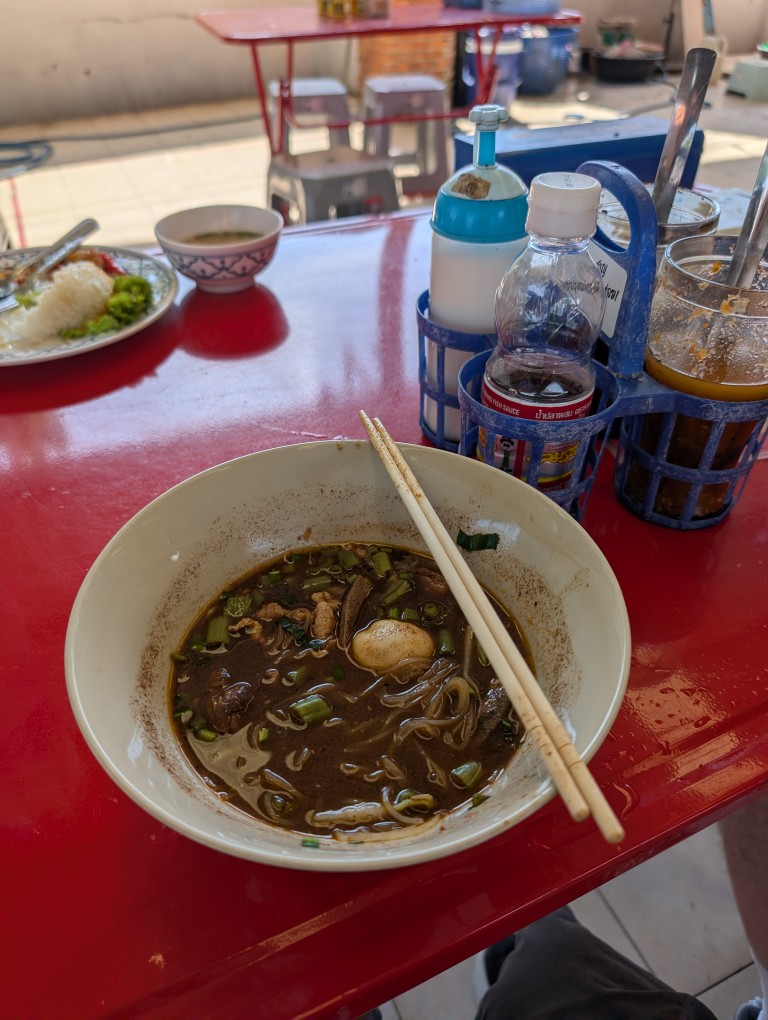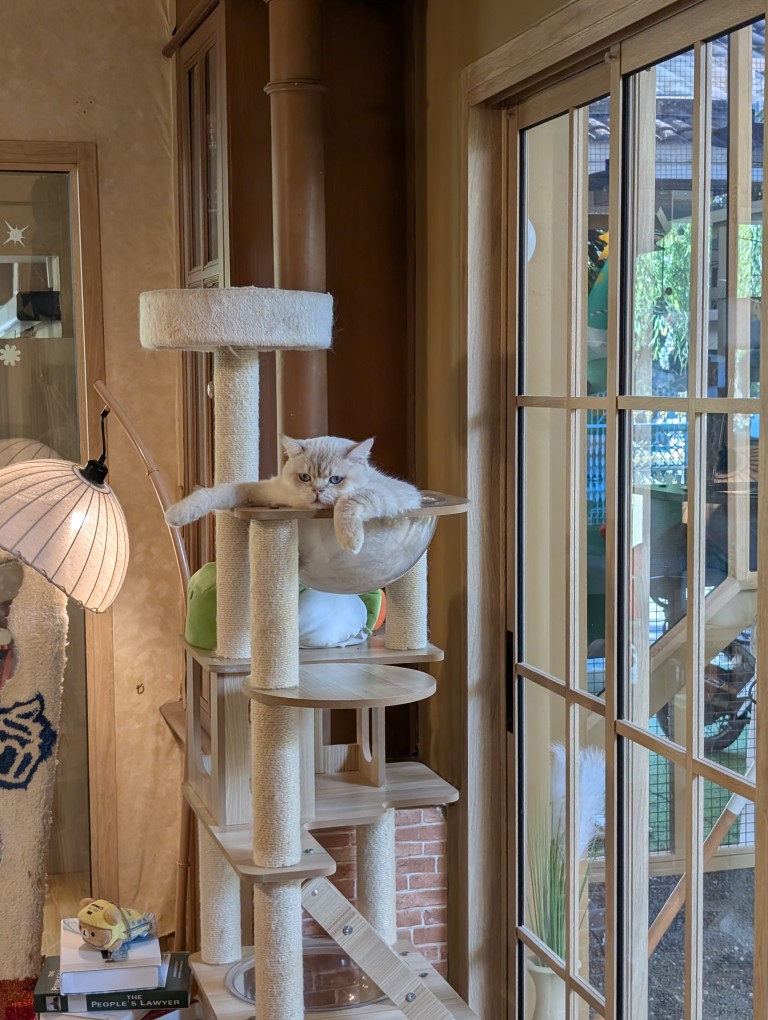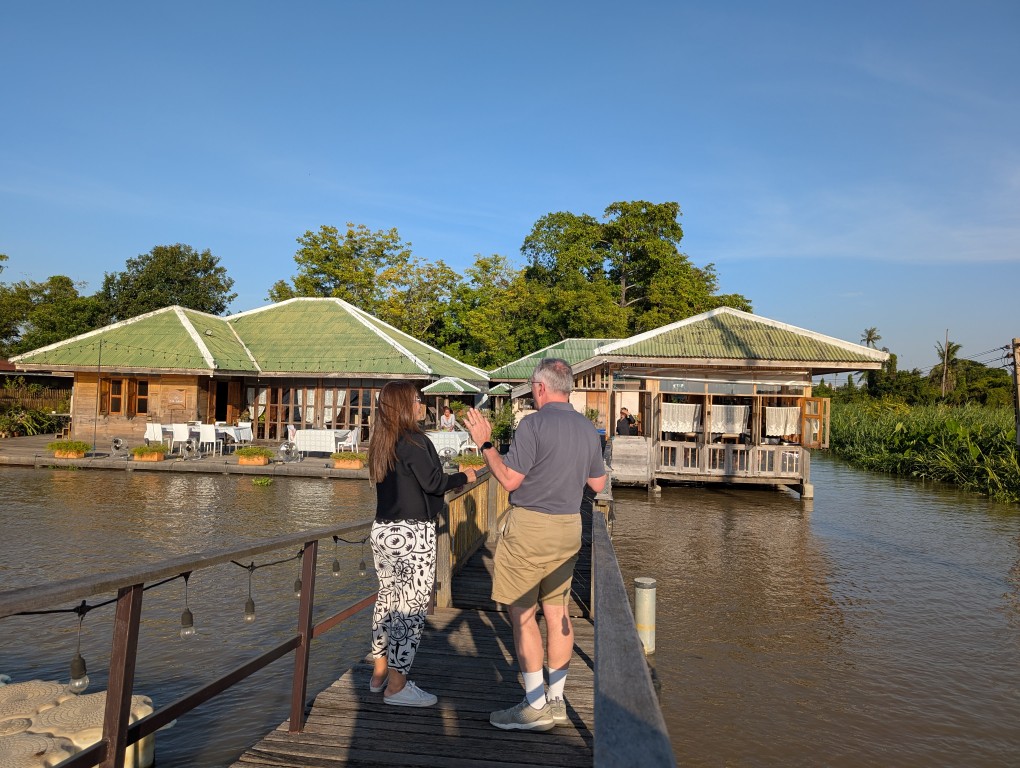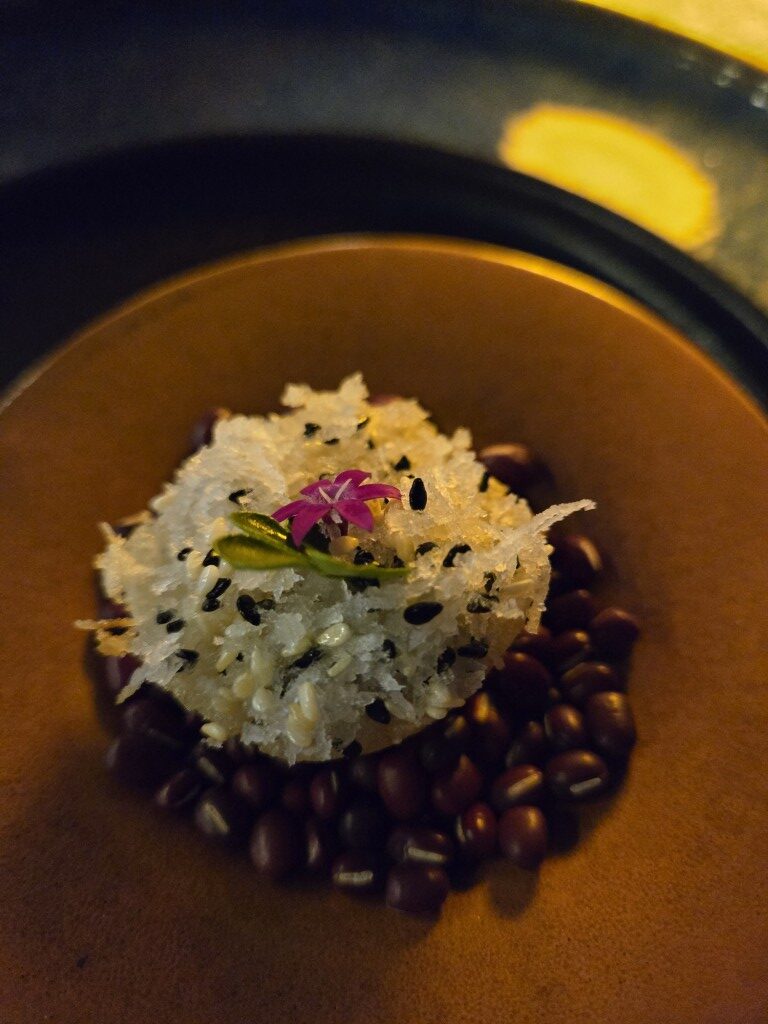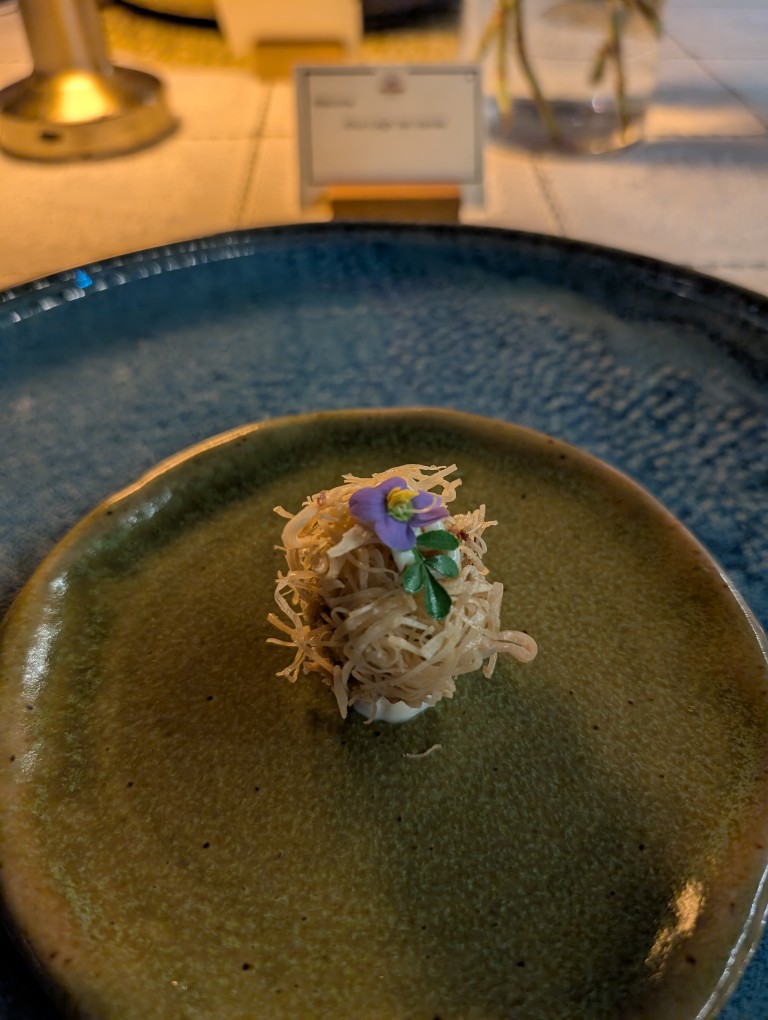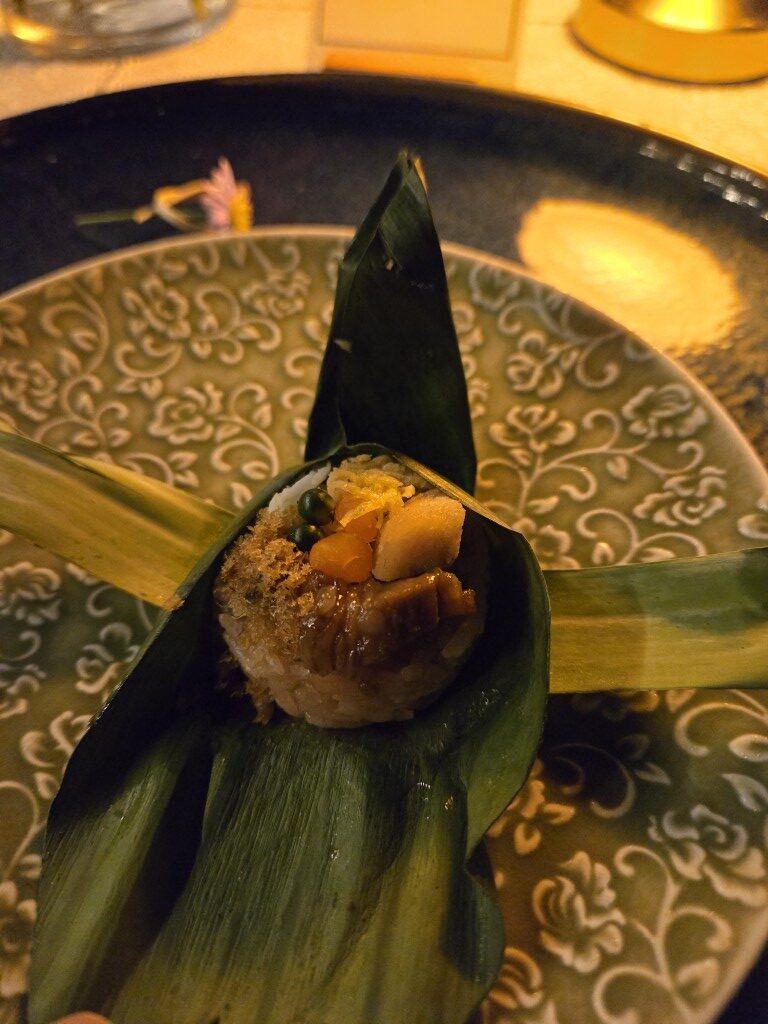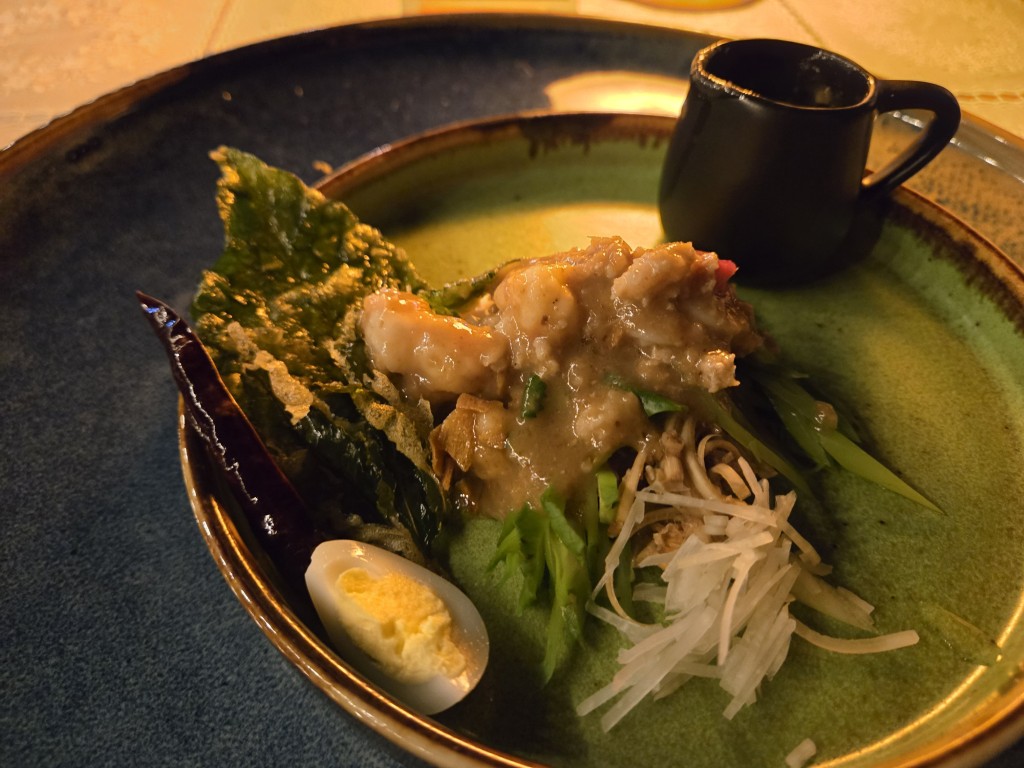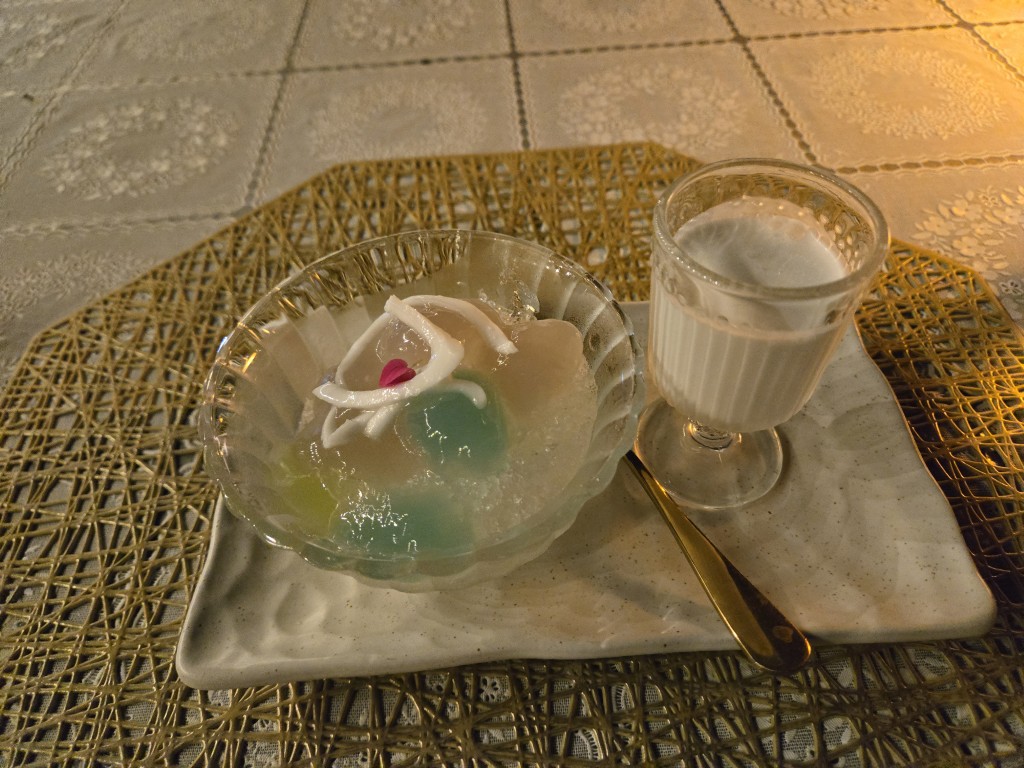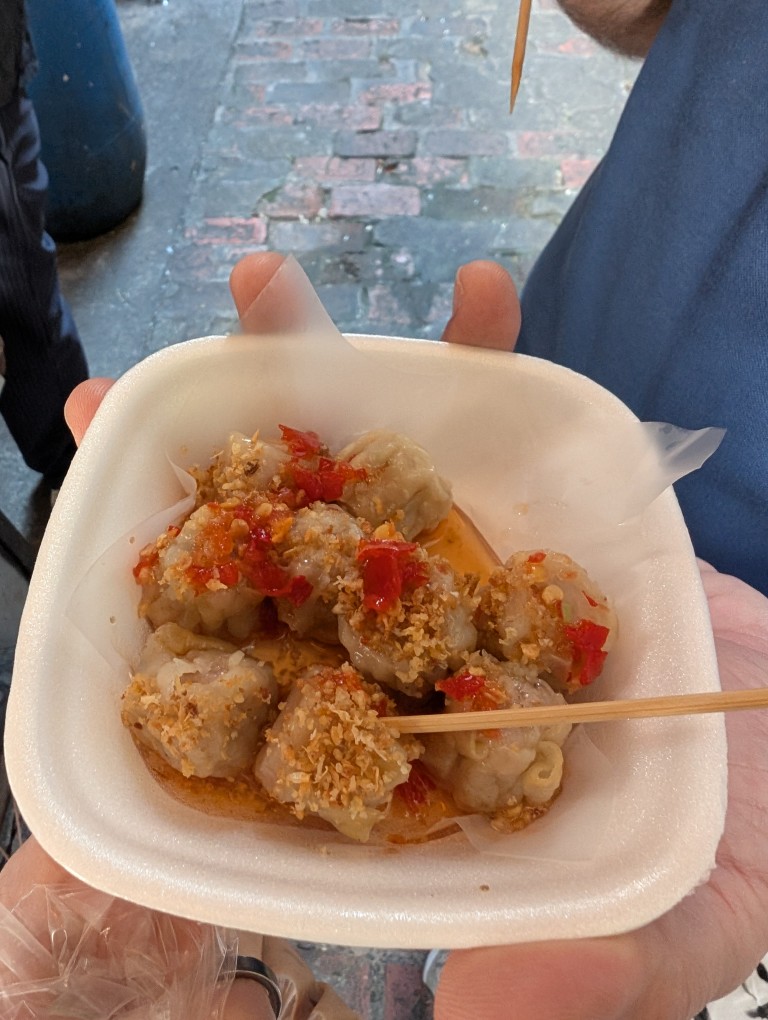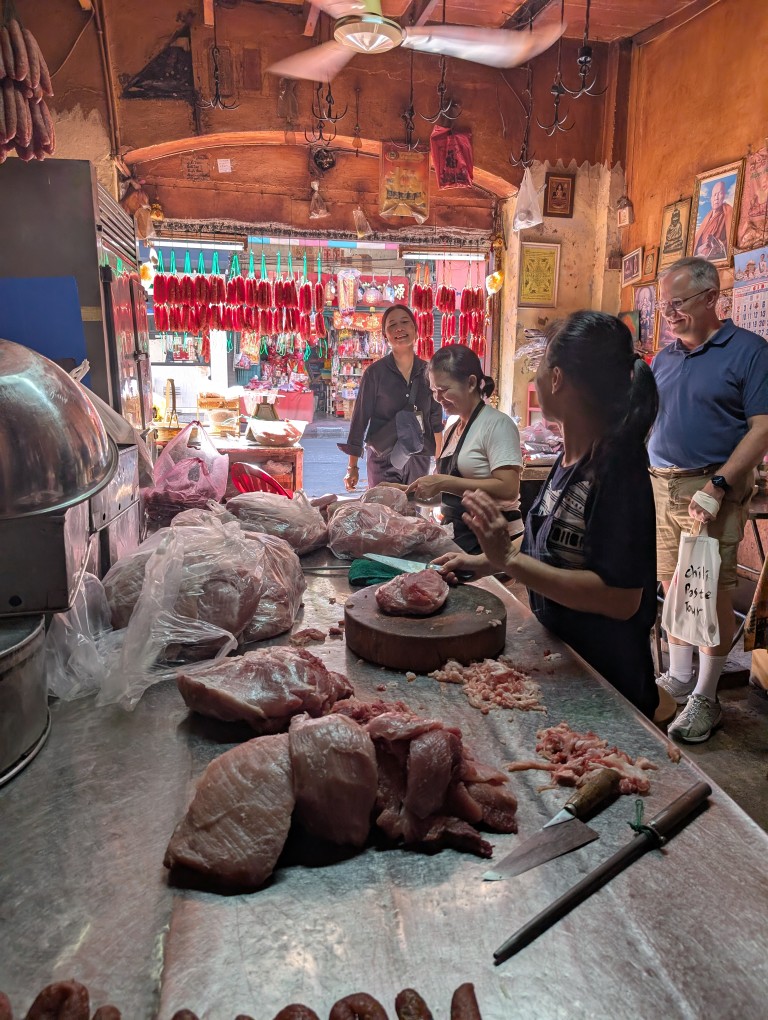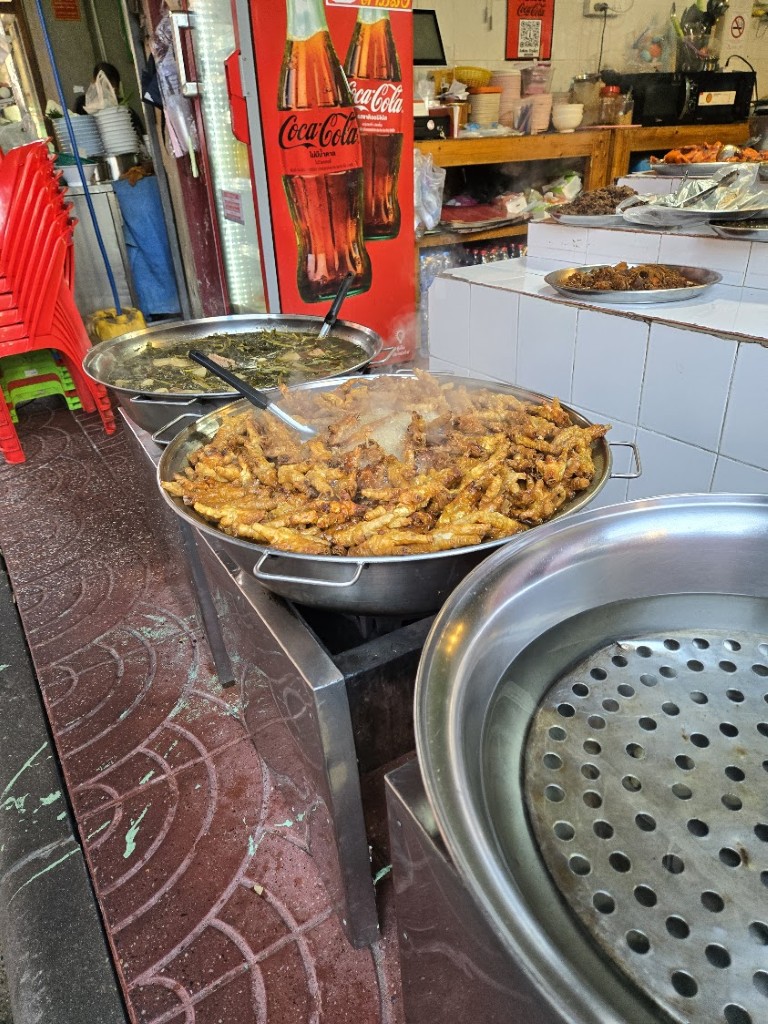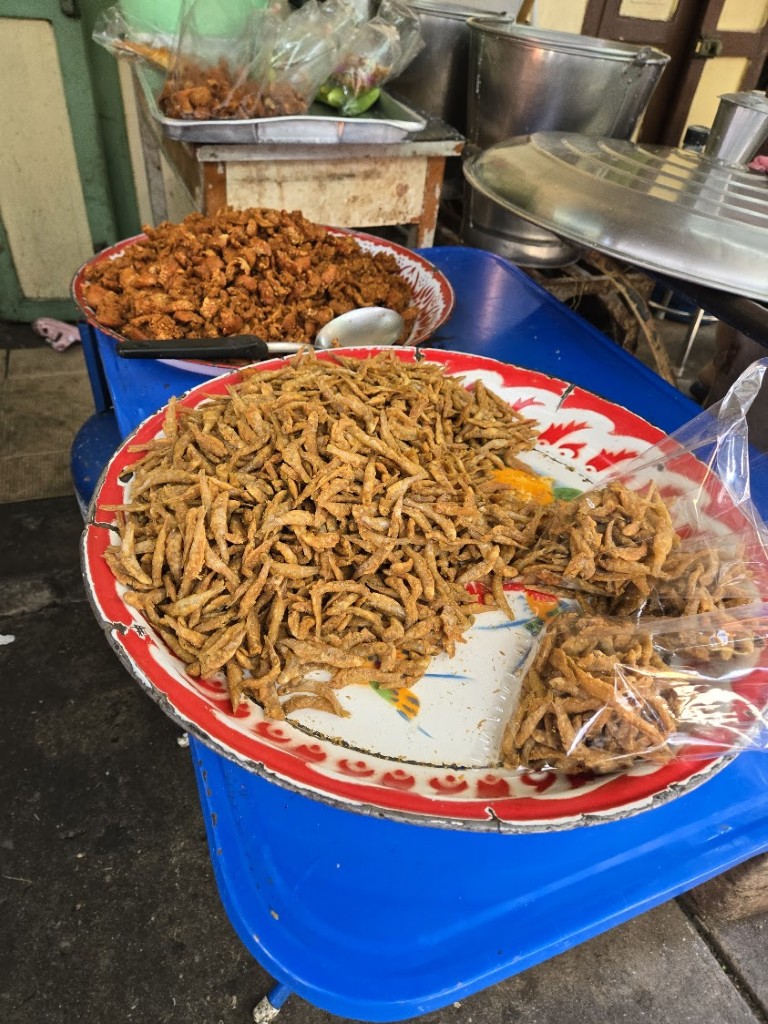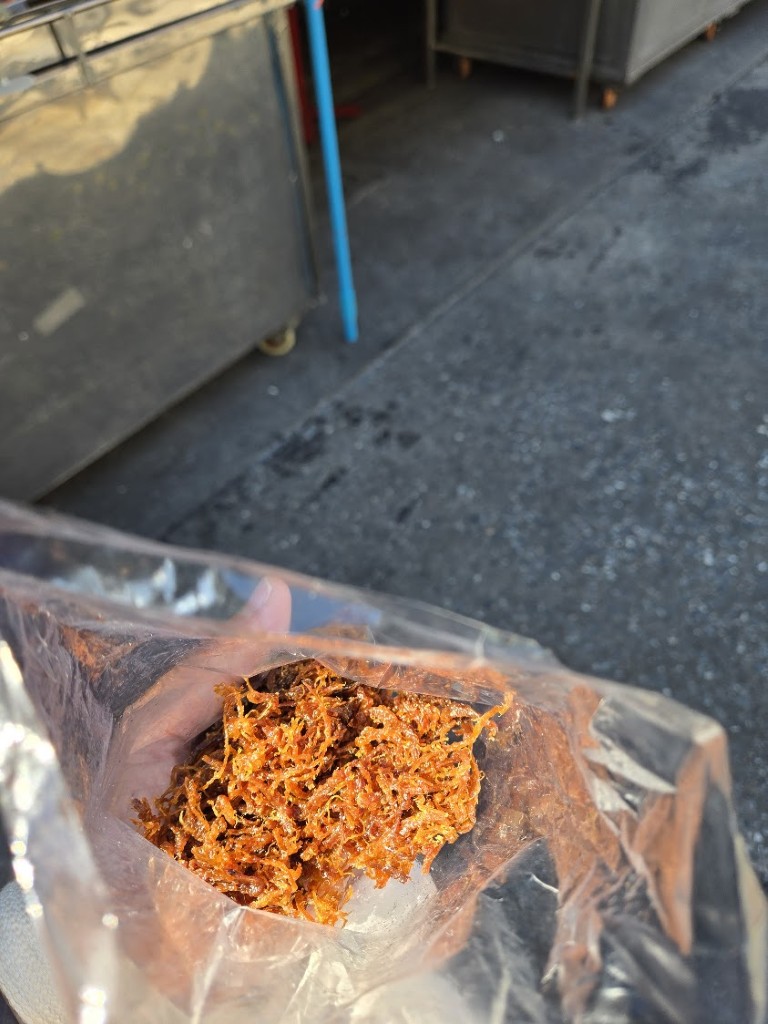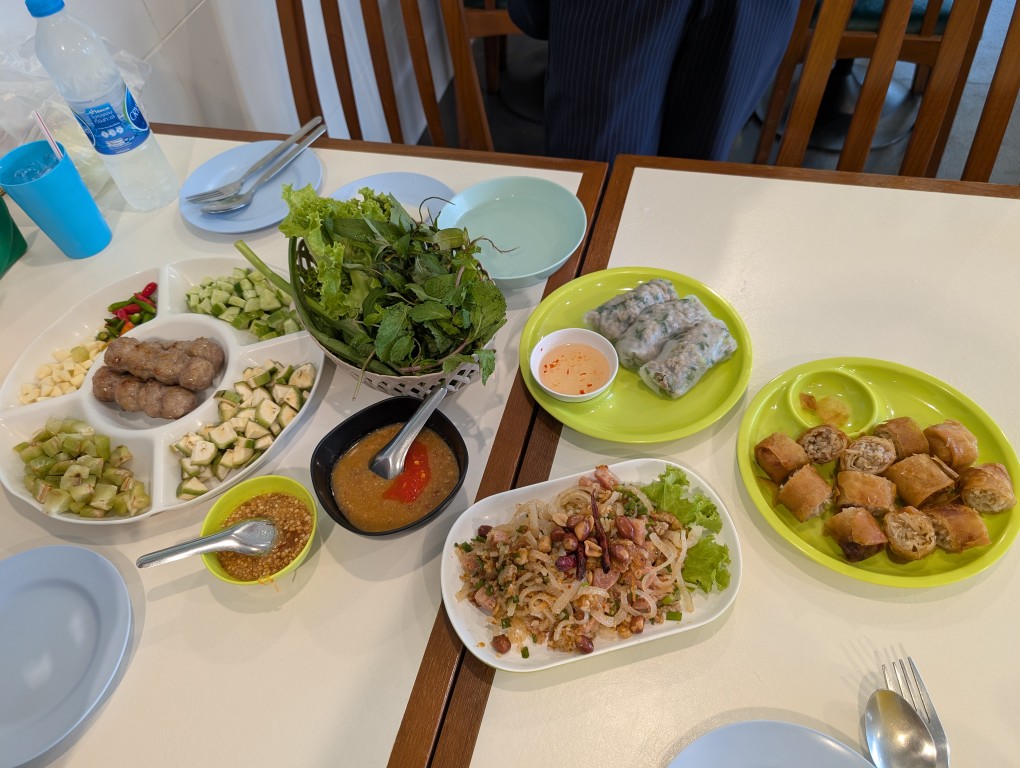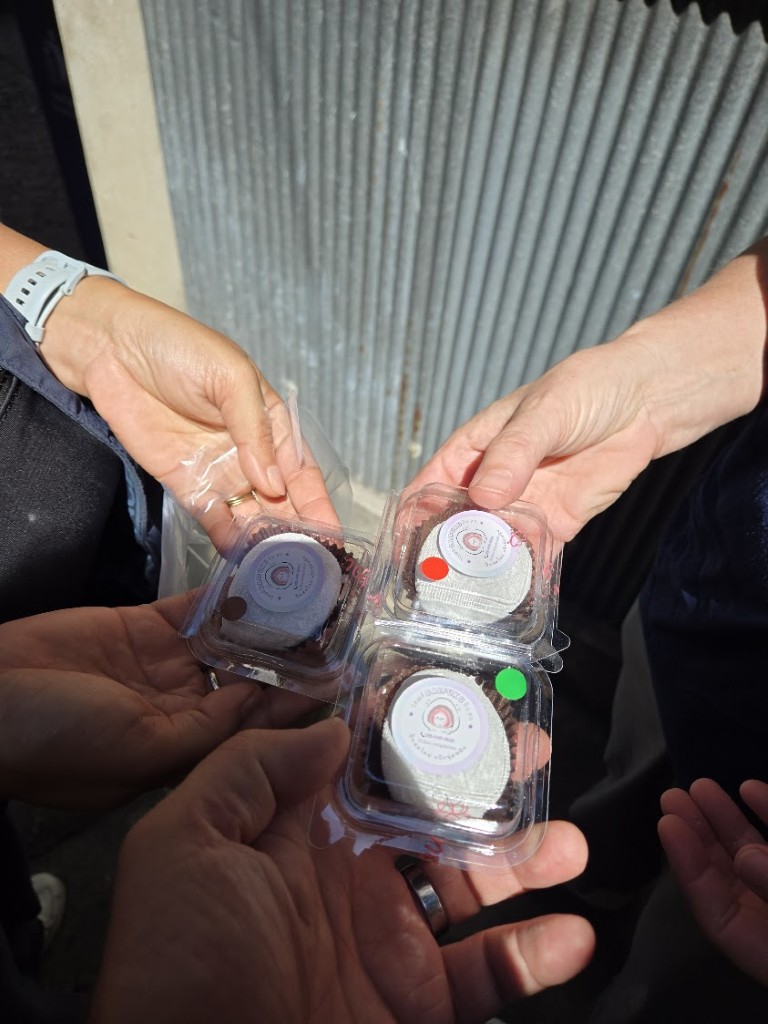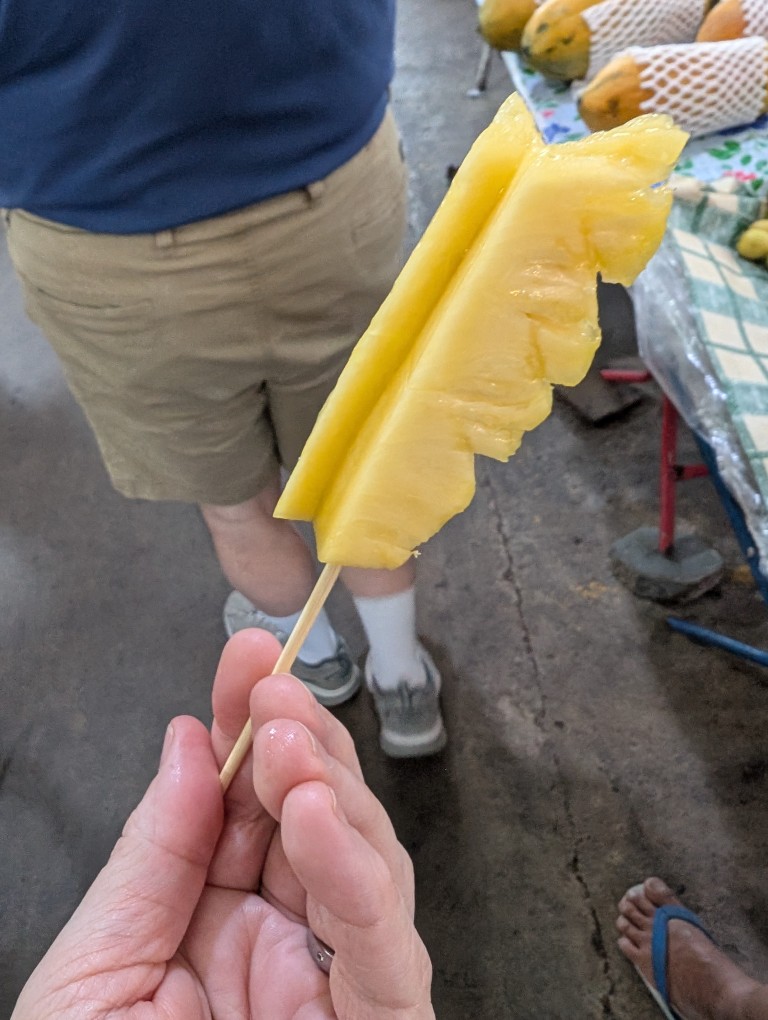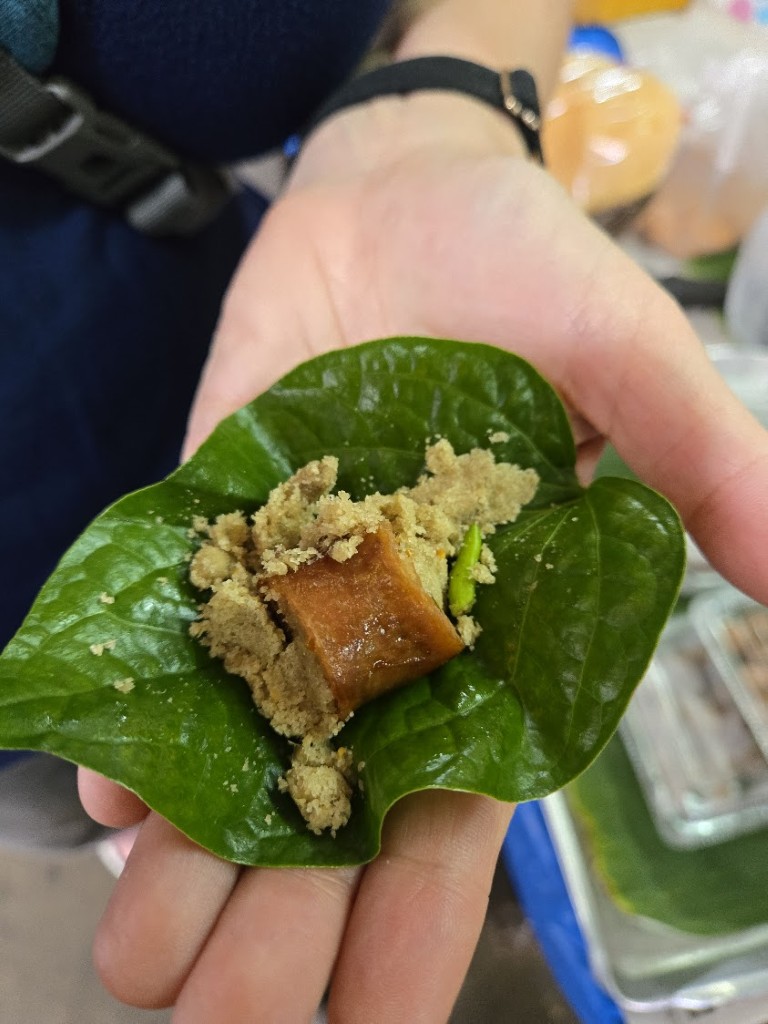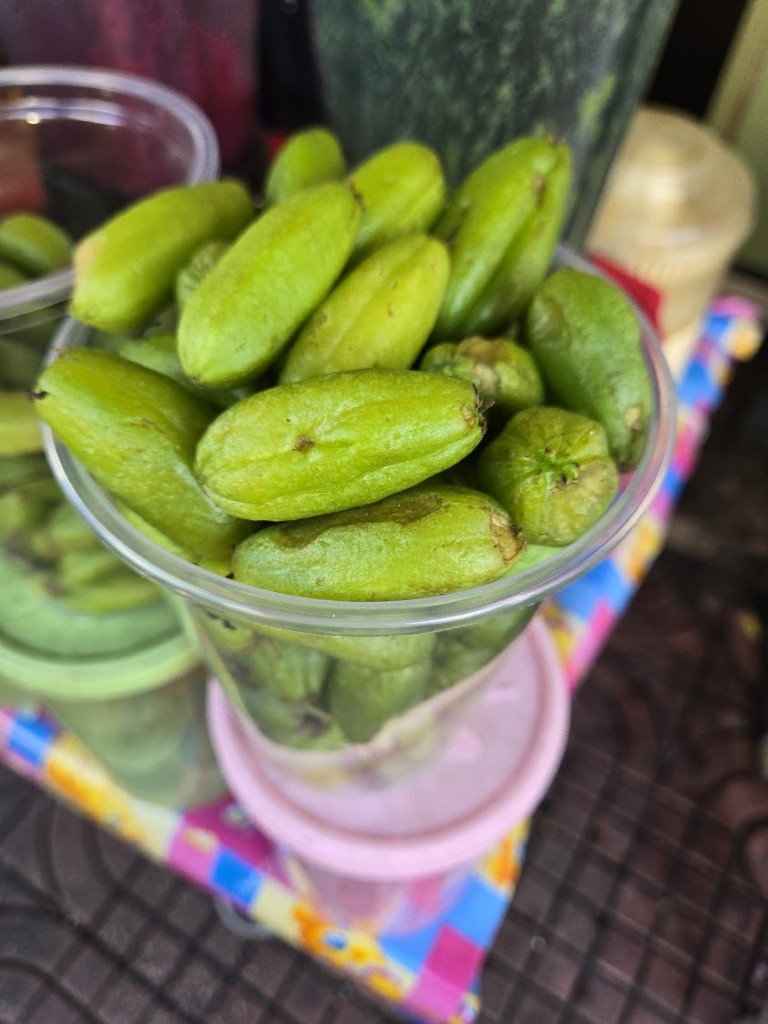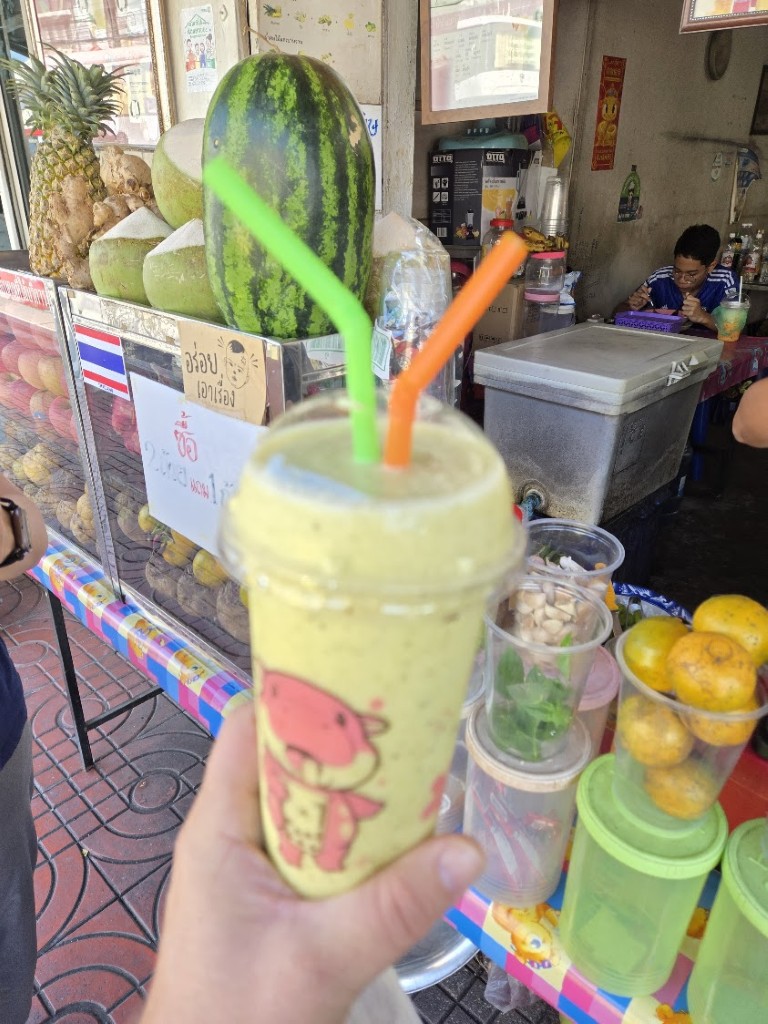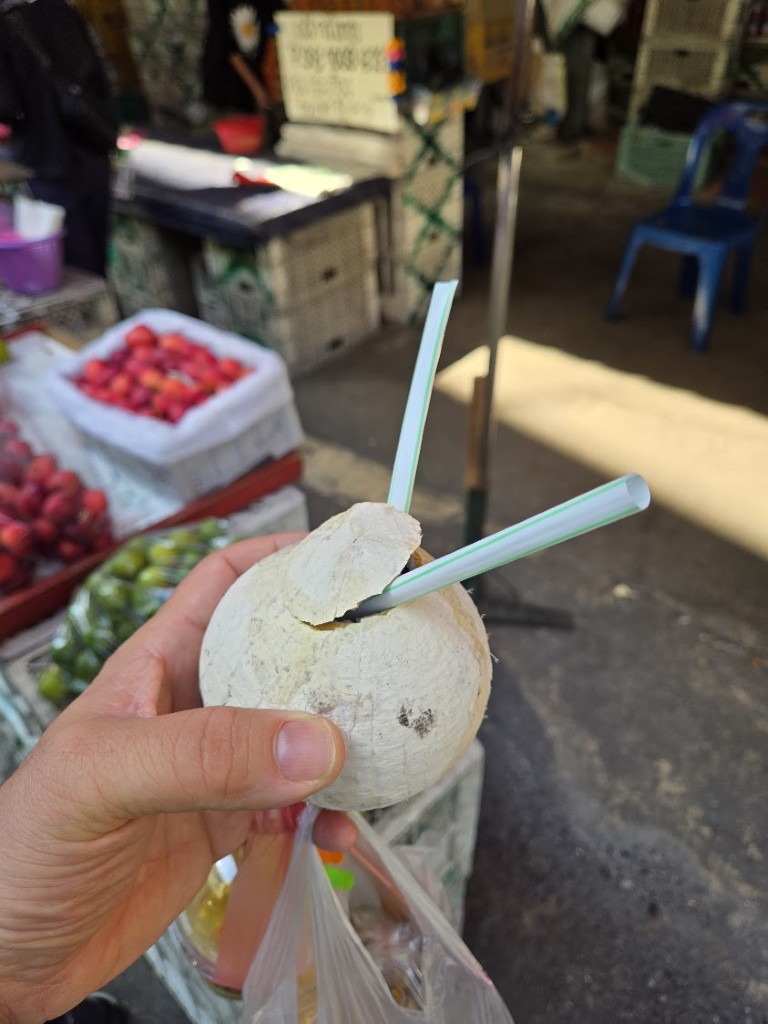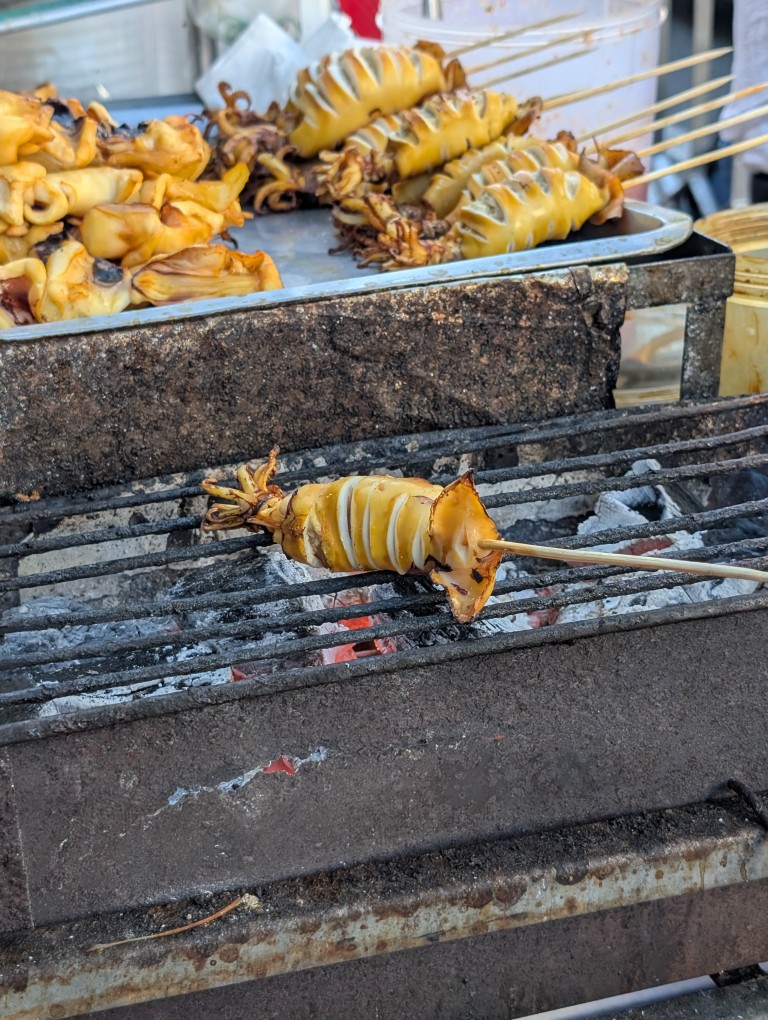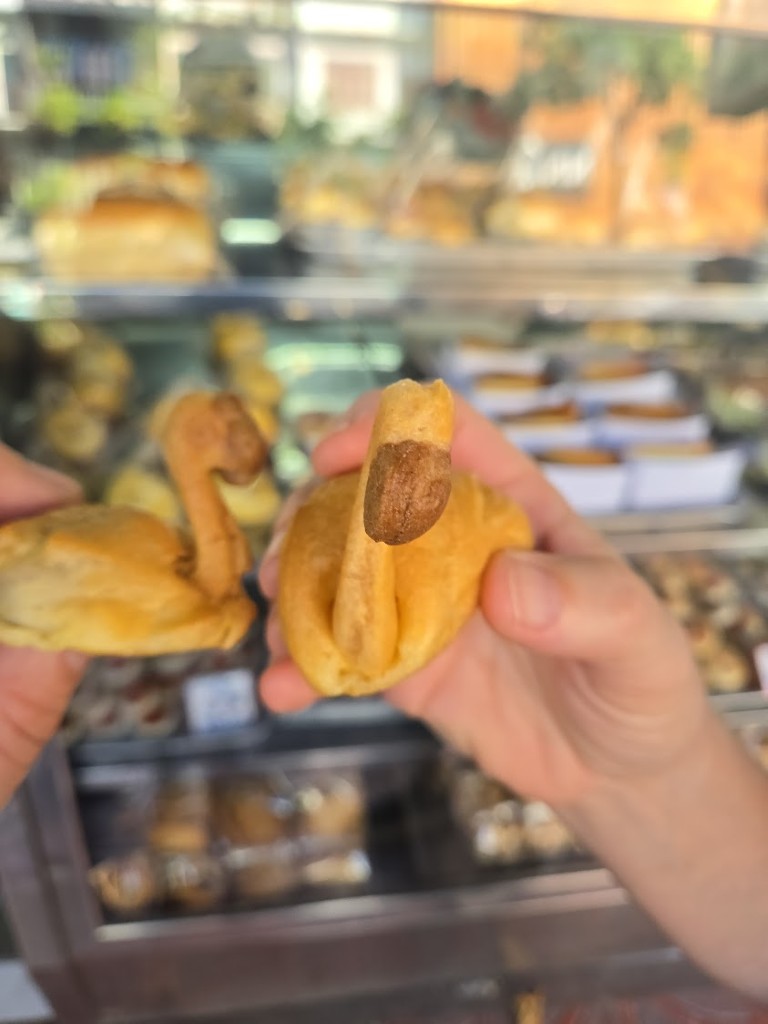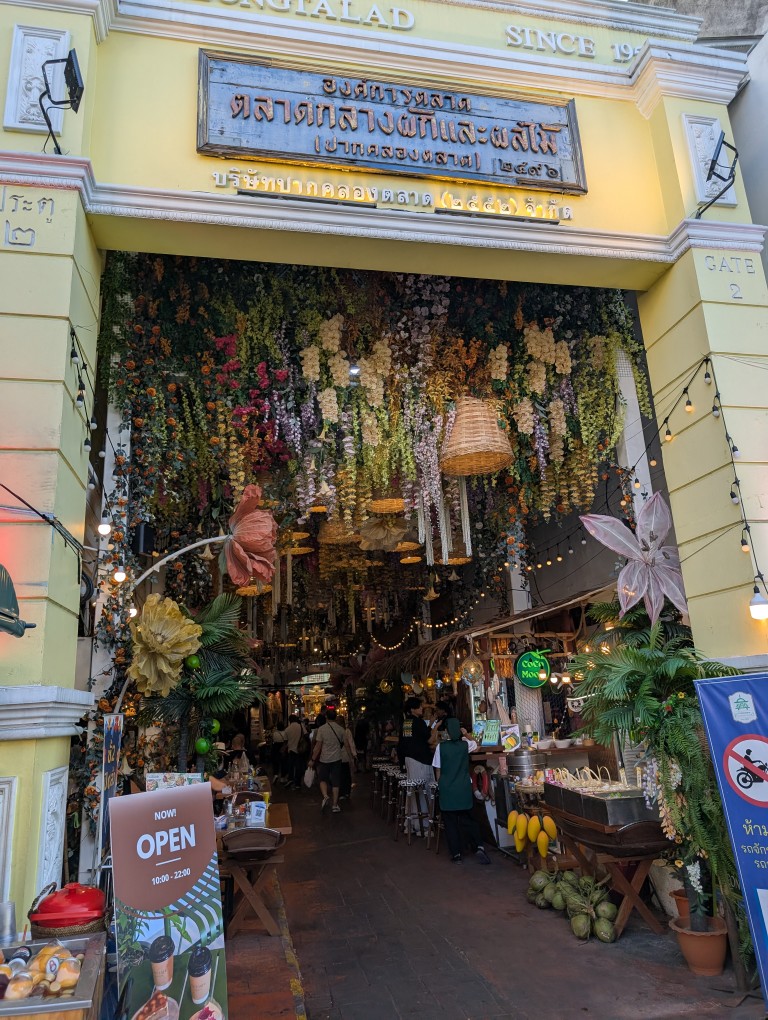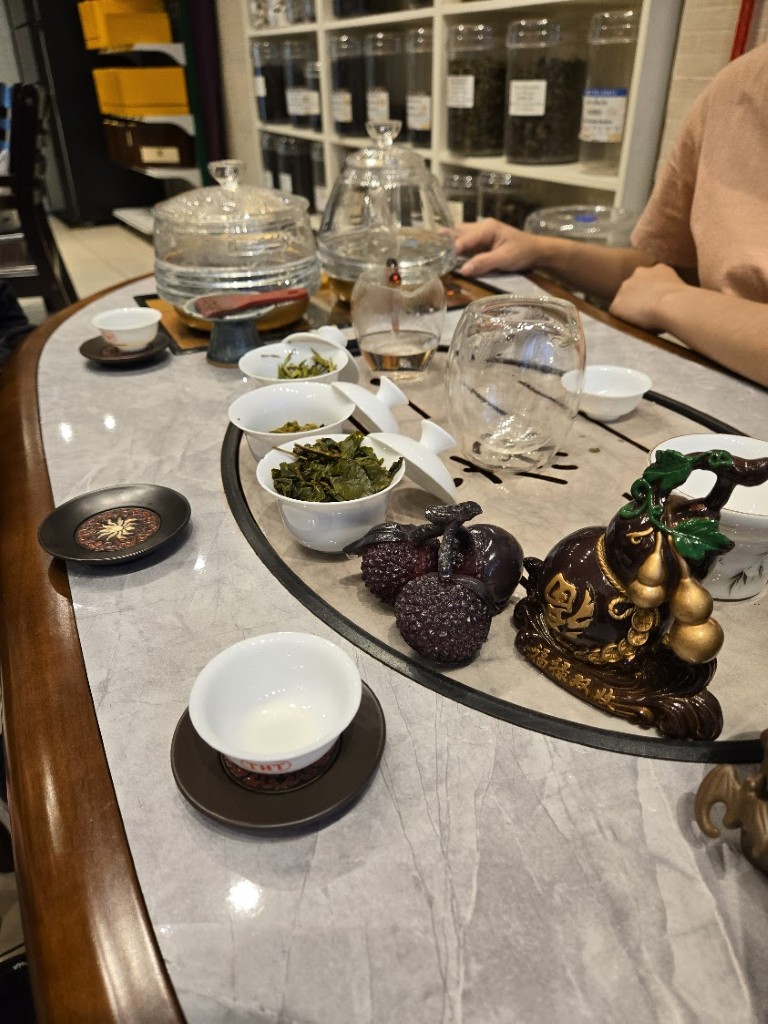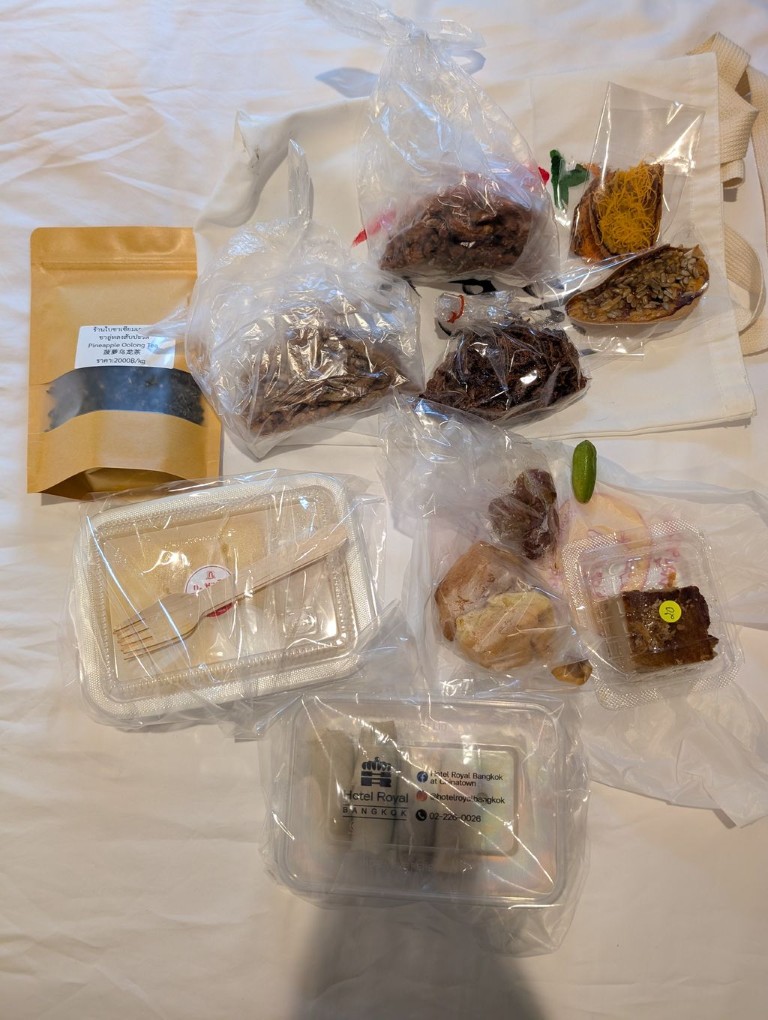On our last day in Chiang Mai, we decided to go for a walk. Specifically, we decided to make our way up a hiking trail, colloquially referred to as “the monk’s trail”, since it leads first to a monastery, and then to a temple.
Both of which are up the side of a reasonably steep hill.
We took a Grab to the start of the hike, and it really was a very tranquil walk in the woods.
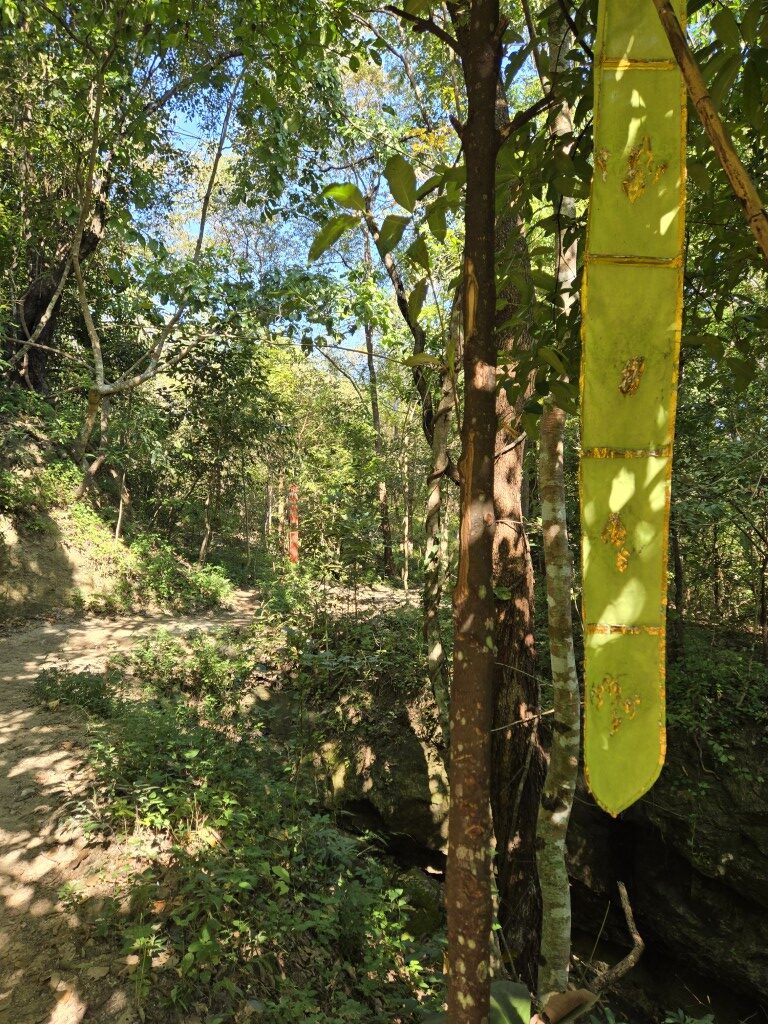
We had been a bit nervous, because some videos we had watched on this hike indicated that it was quite punishing. But the first bit, from the trailhead up to the monastery, was fine.
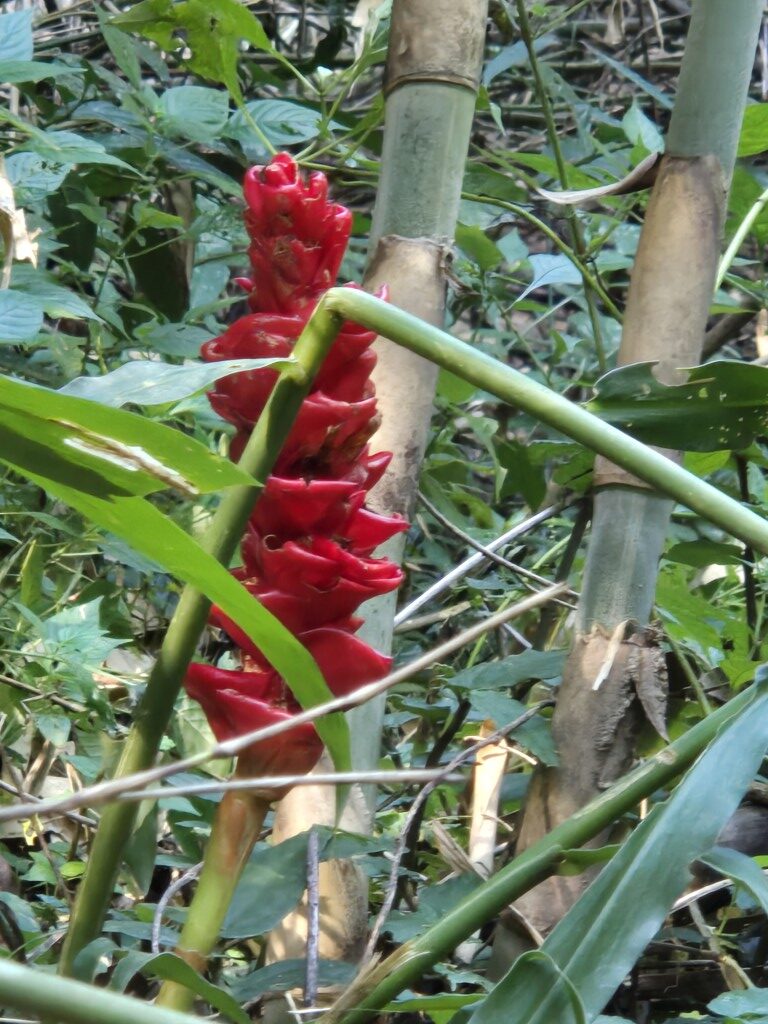
Some neat birds, a few waterfalls, and we arrived at Wat Pha Lat, which was a lovely secluded spot to rest for a while.


And at this point, we were faced with a choice – there was a road that passed nearby, on which we could probably get a ride to the temple at the top of the hill. Or we could keep hiking.
We decided to at least hike up to the road, instead of walking over to the main entrance.
Whoo boy – the hike up to the road was near vertical, and when we came out, we realized there was a LOT more near vertical between us and the temple on top of the mountain.
So we hailed a passing songthaew, which appeared to be well used to this eventuality.
And as the truck switchbacked up, and up, and up, and up, and up, we became less and less concerned that we had somehow wimped out, and more and more grateful that we had decided not to spend the entire day hauling ourselves up the side of a a mountain.
Besides, it’s not like we were done climbing. Disembarking at the entrance to Doi Suthep, we were confronted with one or two stairs to climb to get to the temple.

Like Tiger Cave, though, the view was worth it.

I managed to give myself two jump scares in quick succession in one of the smaller rooms around the temple complex.
Something we’d seen at quite a few temples was lifelike figures of famous monks. Including some relatively recent ones with modern-looking glasses. This was a pretty common thing.
But I missed the one near the entrance to this room until after I walked in, so I turned, and immediately started, because there was a figure of a monk sitting to the left of the entrance.
OK, that’s funny.
Then the monk moved and I jumped again, because it turns out this was a real person, and not a figure.
The main stupa at Doi Sutep is at the very highest point, and is itself pretty darned impressive.
And then we had to do the stairs the OTHER way.

One songthaew later, and we were back in town. Only two more meals left in Chiang Mai – what to do? How about some Thai style fried chicken?

Yes please. It was so good we forgot to take a picture of it before it was gone, that’s how good it was.
For the afternoon, we wanted to try one more thing that tourists in Thailand do, and that’s get a Thai massage. There are massage places everywhere in the tourist areas of Thailand. I cannot stress just how common they are – typically 2 or 3 per block.
So picking one in particular can be difficult, but fortunately we had gotten a recommendation from some of our friends from the elephant sanctuary trip the day before. When we arrived, there was scheduling availability for each of us to get a foot and leg rub together, so that’s what we did.
And here’s the thing… I don’t think I did this right. I had never gotten a professional massage before, and so I just assumed that the masseur knew what they were doing, and if things started to hurt, they were supposed to.
Things started to hurt. Specifically, when he started digging into the balls of my feet there was a lot of pain. Not the fun pain, not the “oh you bastard, keep doing that,” pain, just… pain.
But I thought that was normal, so I bit my lip and powered through.
It wasn’t fun, and I didn’t feel better at the end.
And from talking to Leigh afterwards, I realized that isn’t what’s supposed to happen. I should have said something when the pain got bad, and asked the masseur to slow down, or do something else.
But I didn’t, so I spent the next couple hours limping around the hipster neighborhood of Nimmanhaemin.
Now to be clear – it’s a fun neighborhood. We saw some cool jewelry stores, had some (sadly underwhelming) craft beer, ate some chocolate, got fooled by some AI generated slop on a playlist (ugh), and generally enjoyed the atmosphere.
One last meal – what to do? We had been told that one thing that it is good to try in Thailand is Burmese food, since it’s so hard to get in North America. On the one hand, we were actually an exception to that rule, since we were fortunate enough to live near a good Burmese restaurant in Michigan for quite some time.
On the other hand, we lived near a good Burmese restaurant in Michigan for quite some time, so we knew how delicious Burmese food is. Pickled tea leaves, here we come!
 (At least there was SOME food left when we remembered to snap the picture?)
(At least there was SOME food left when we remembered to snap the picture?)
We wandered back to our hotel, and went for one last walk around. Chiang Mai is great, and probably our favorite place we stayed in the whole trip. 5/5 would tourist again.
